I’m back from my last big trip of the year (unless something else comes up, which is always seems to do). Friday, I started in Mammoth, hitting some spots on my wish list and waiting for Nevada Expeditions to get off work and catch up. Late in the day, I headed to Inyo County for two days of exploration.
Below are brief descriptions of each site.
Mammoth
White Picket Fence
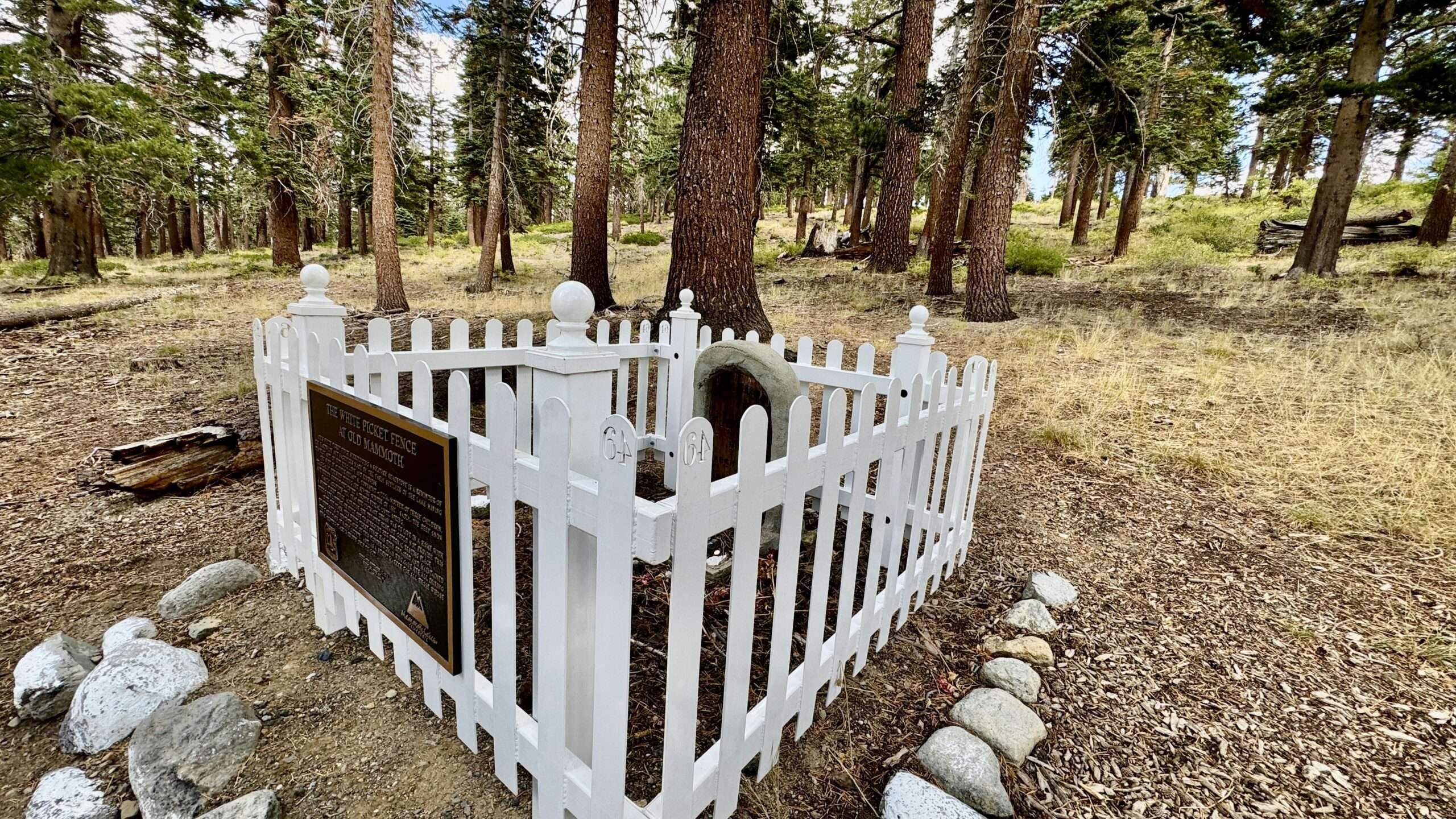
Life around Mammoth was difficult. In 1882, Julia Townsend, wife of Bryant and mother to three, died during the heavy winter. As the ground was frozen and covered in snow, the family couldn’t bury her until the thaw. She once dreamed of having a home with a white picket fence. Unable to fulfill her dream during her lifetime, her husband built a white picket fence around her grave.
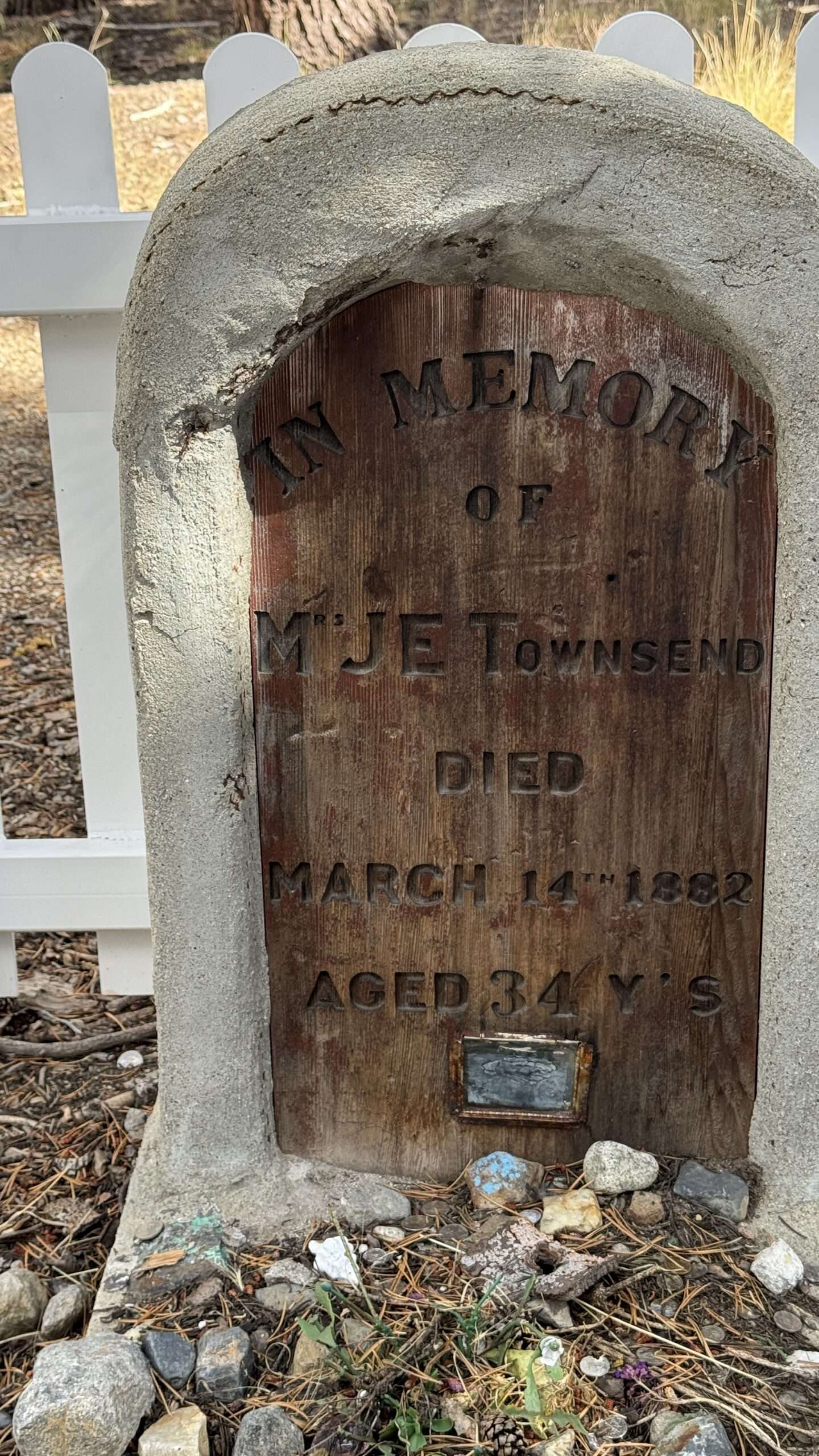
Knight Wheel
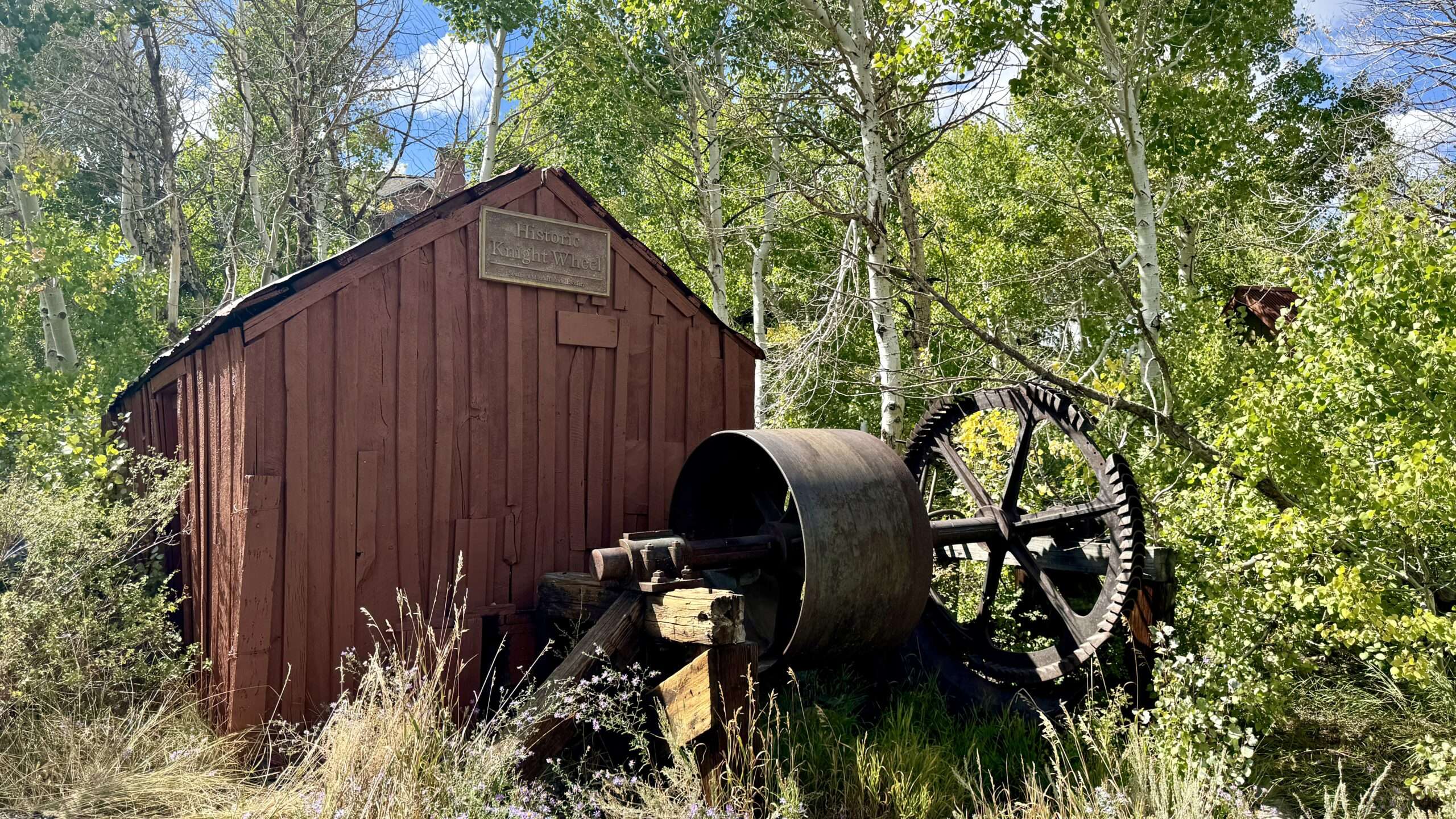
In 1878, a twenty-stamp mill operated at nearby Mill City. A mule team relocated a Knight Wheel from Mojave to power the mill. The Knight Wheel is a Pelton-style wheel, but the turbine generated more power with less water. Within a decade, mining ceased, and the camp was abandoned except for a handful of people.
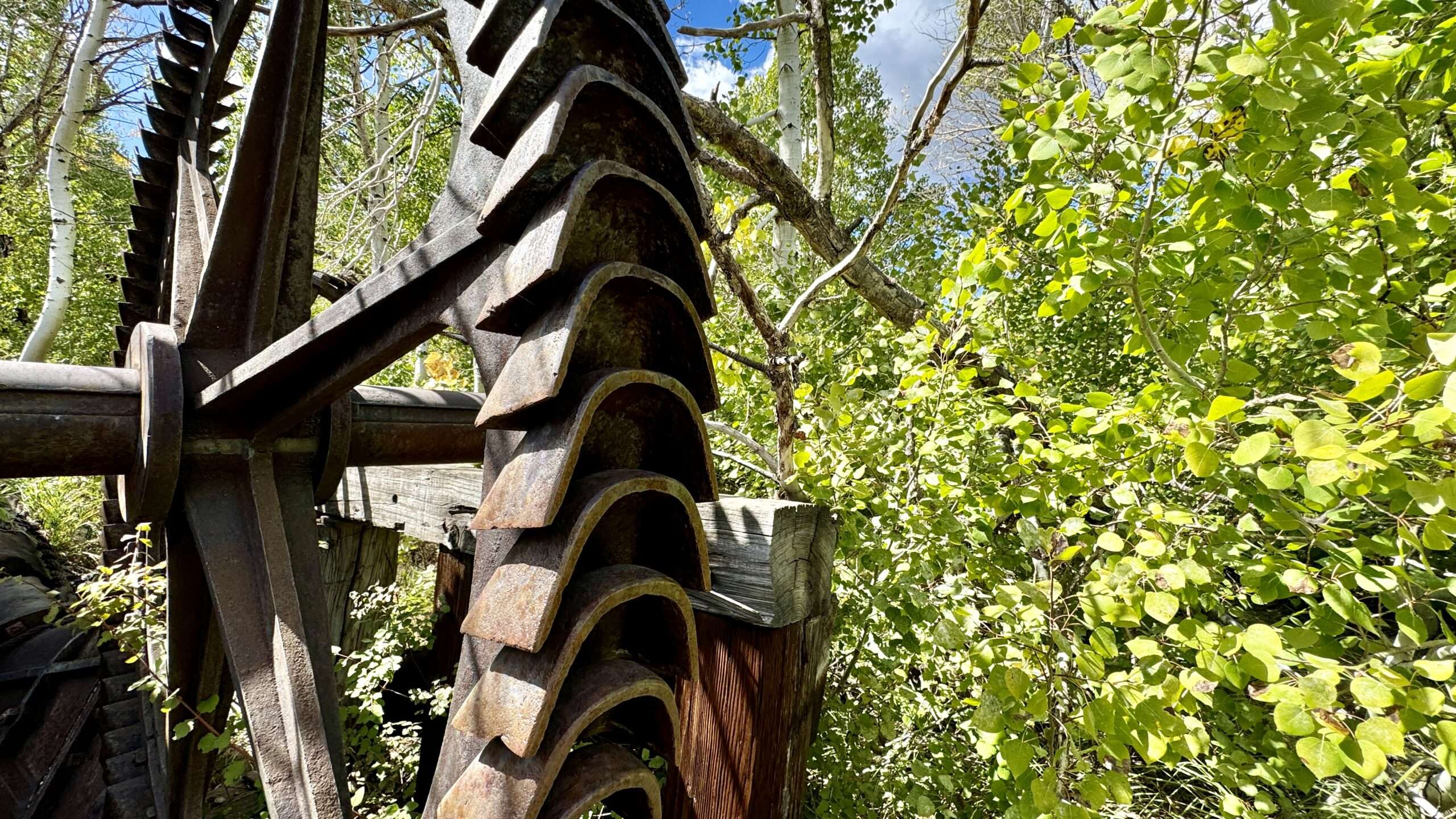
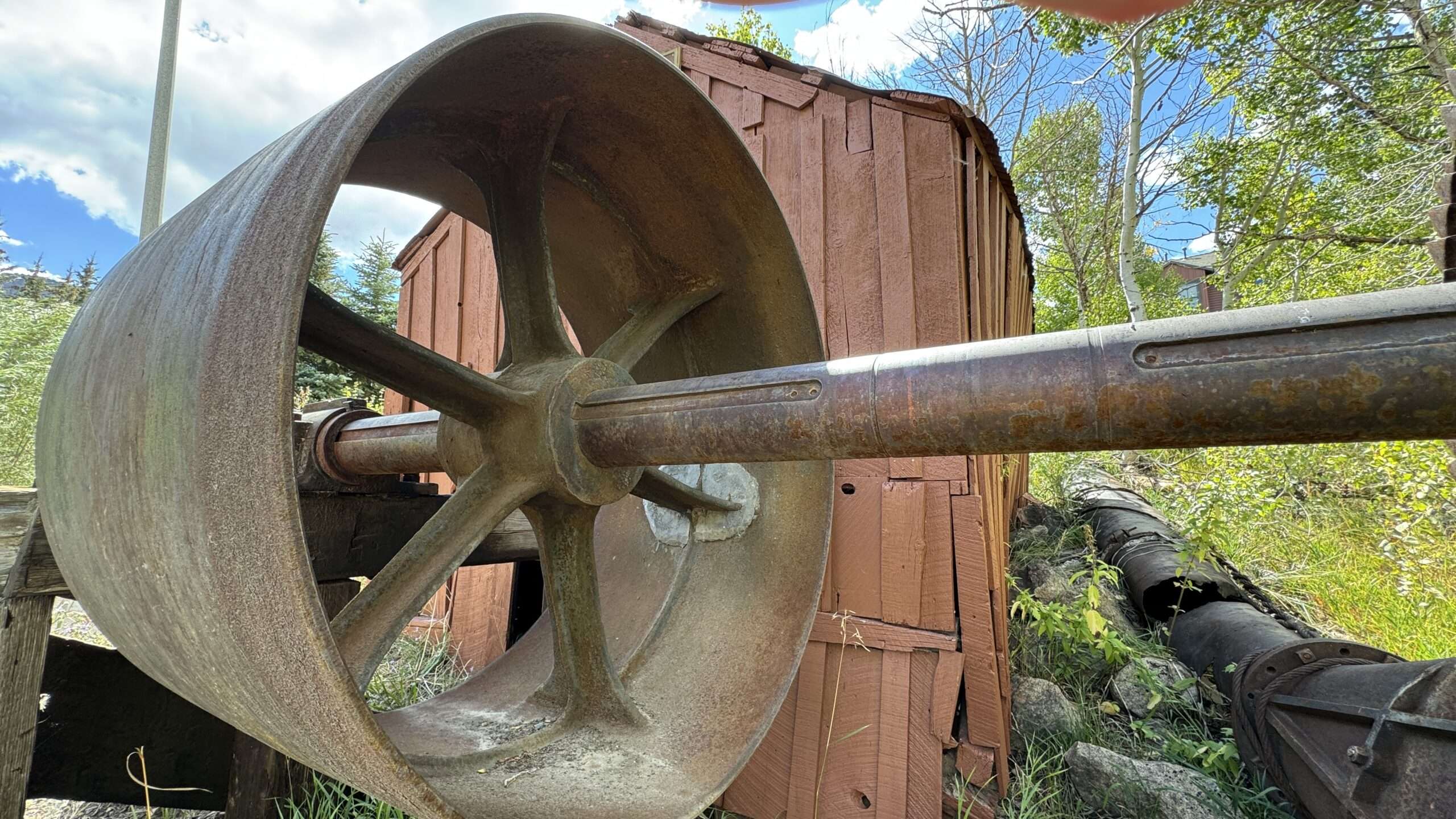
Mammoth Consolidated Mine
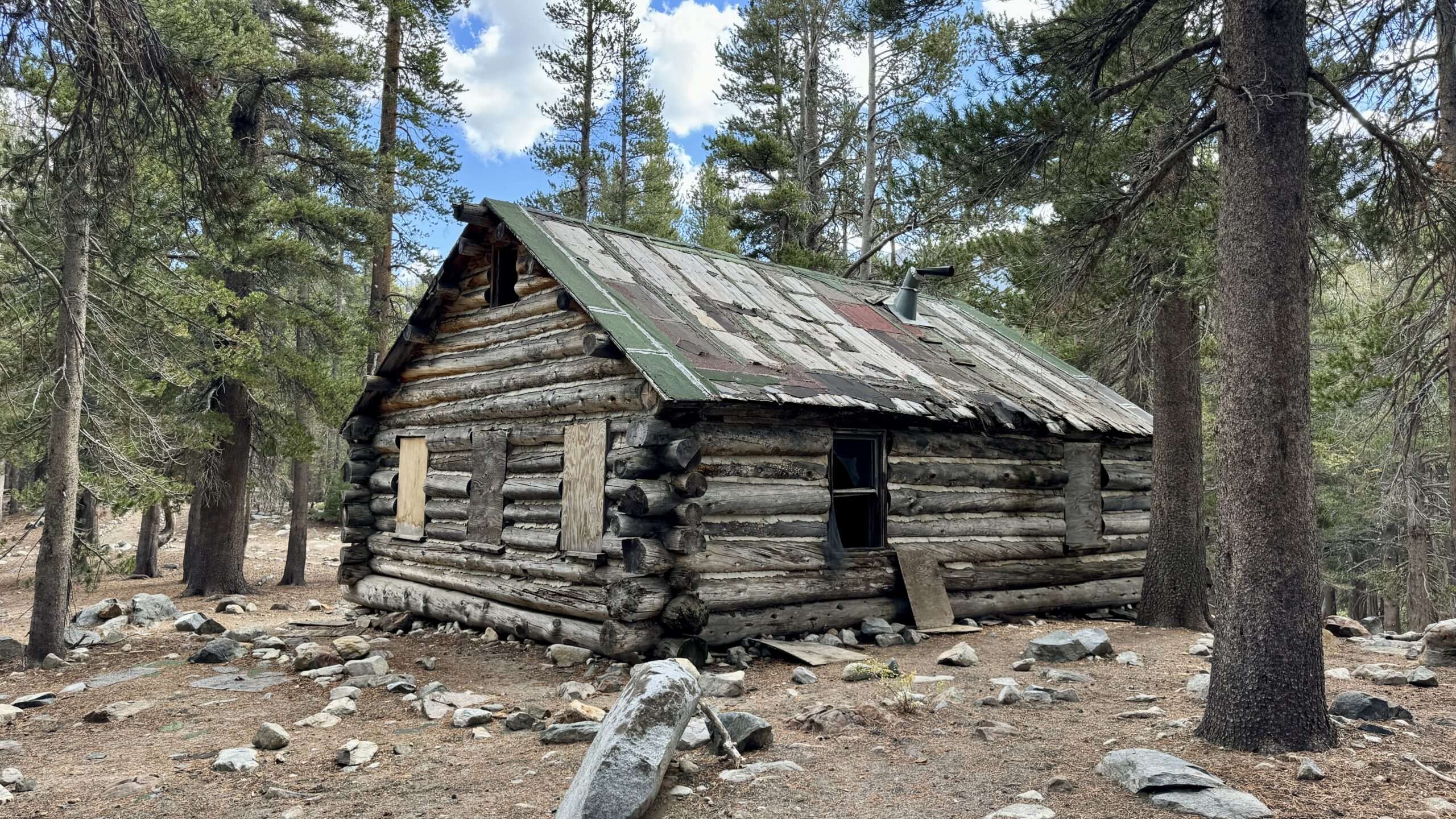
Mahan’s mine above Mammoty produced $100,000 of gold between 1927 and 1933. The US Forest Service protects the mining camp in a state of “arrested decay.” It includes multiple buildings such as Mahan’s cabin, a bunkhouse, and a parts of a diesel-powered mill.
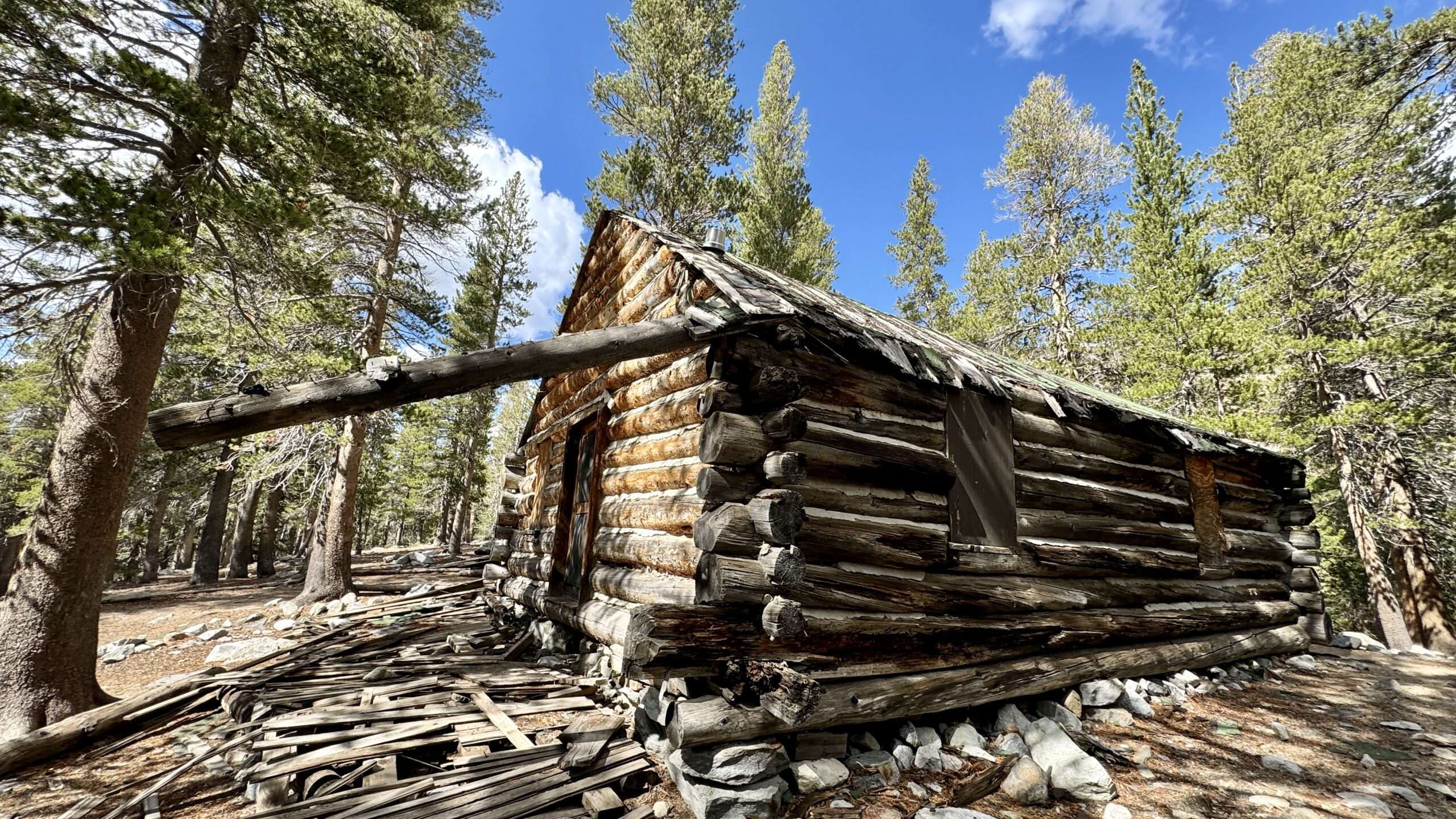
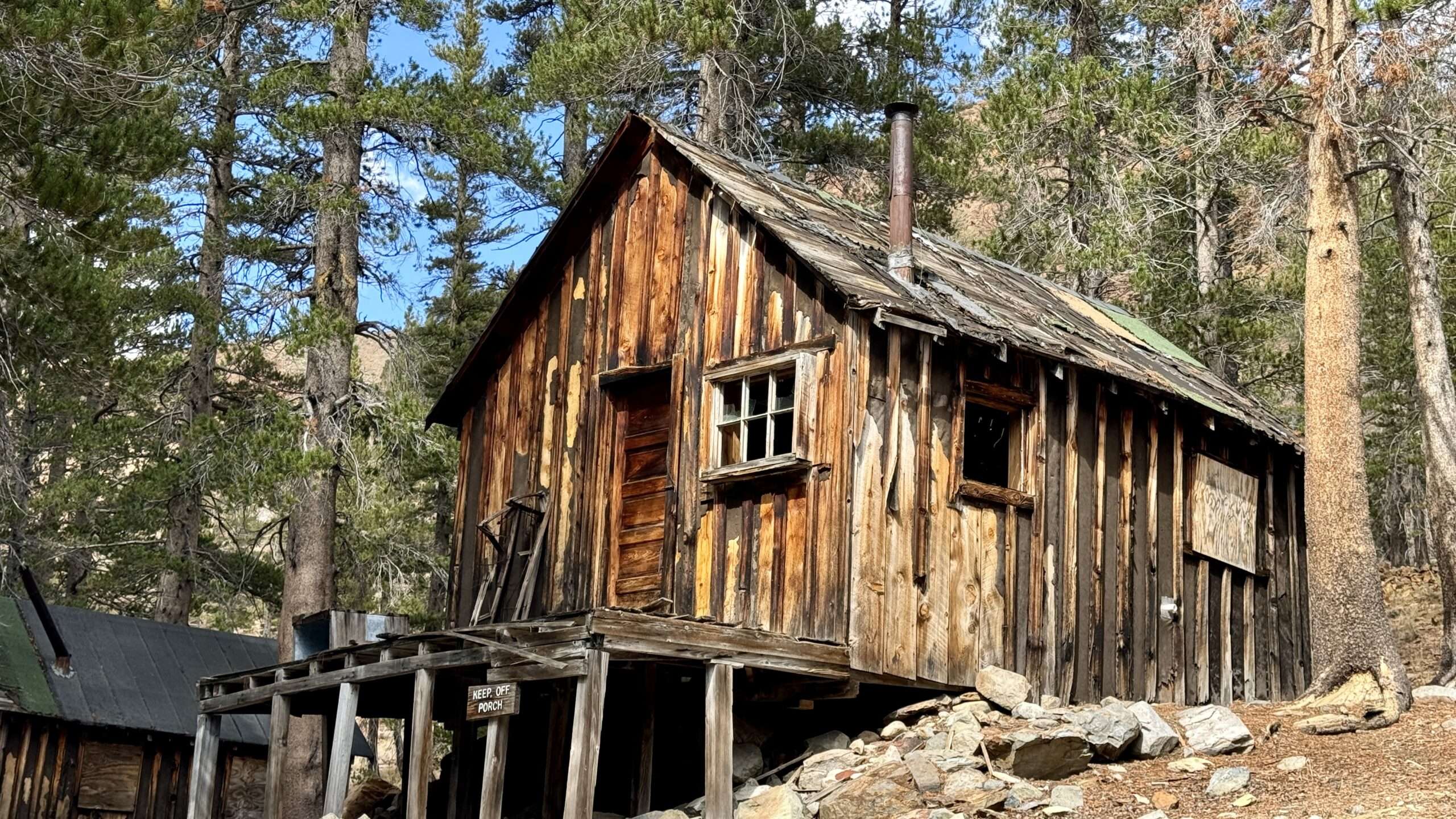

Mammoth Saloon

The Old Mammoth Saloon was relocated to the Longears Ranch on the Owens River in 1914. In 1979, a group of 3rd graders found the building in disrepair. The saloon was repaired and moved back to Mammoth at the visitors center.
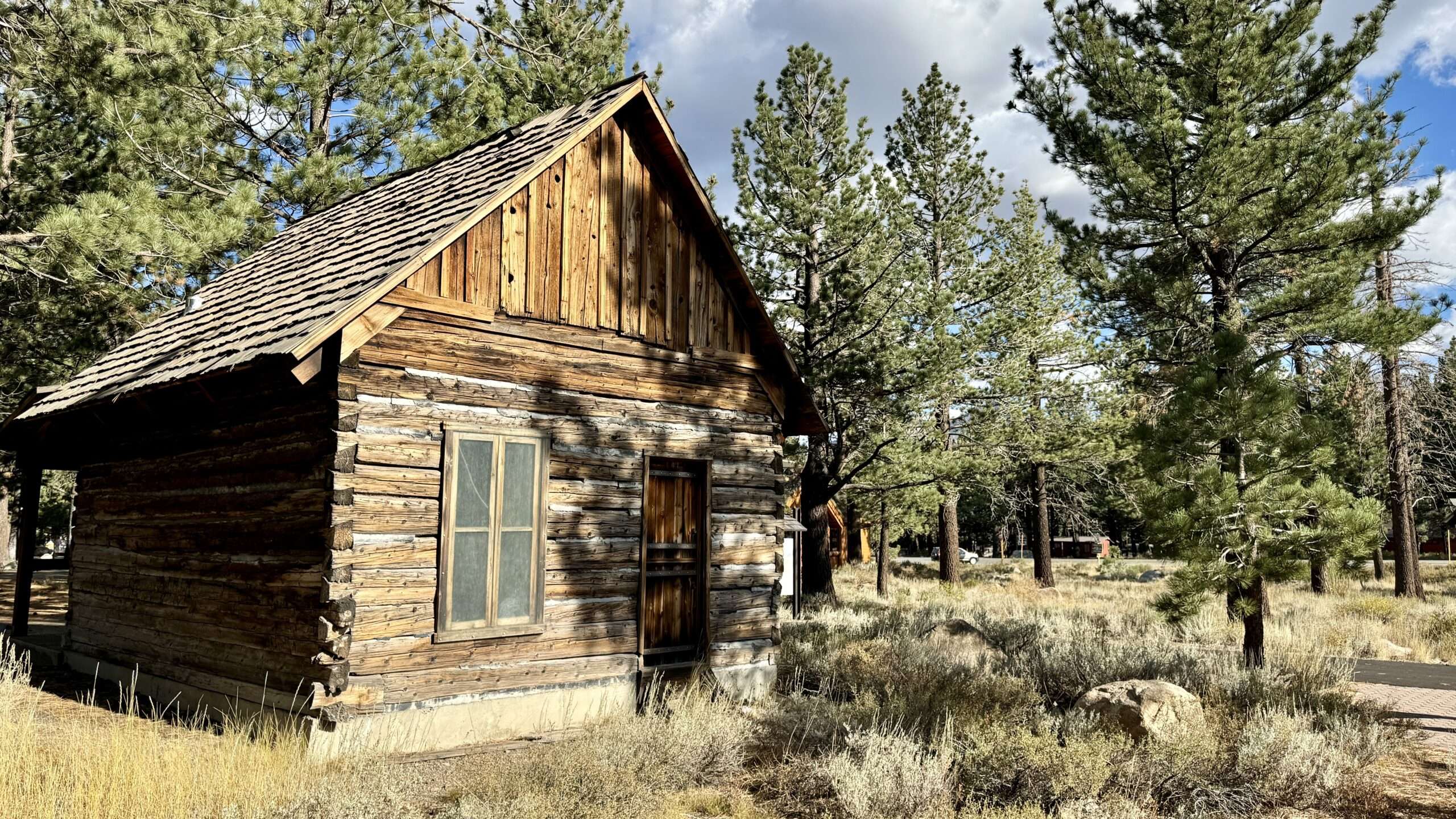
Hayden Cabin
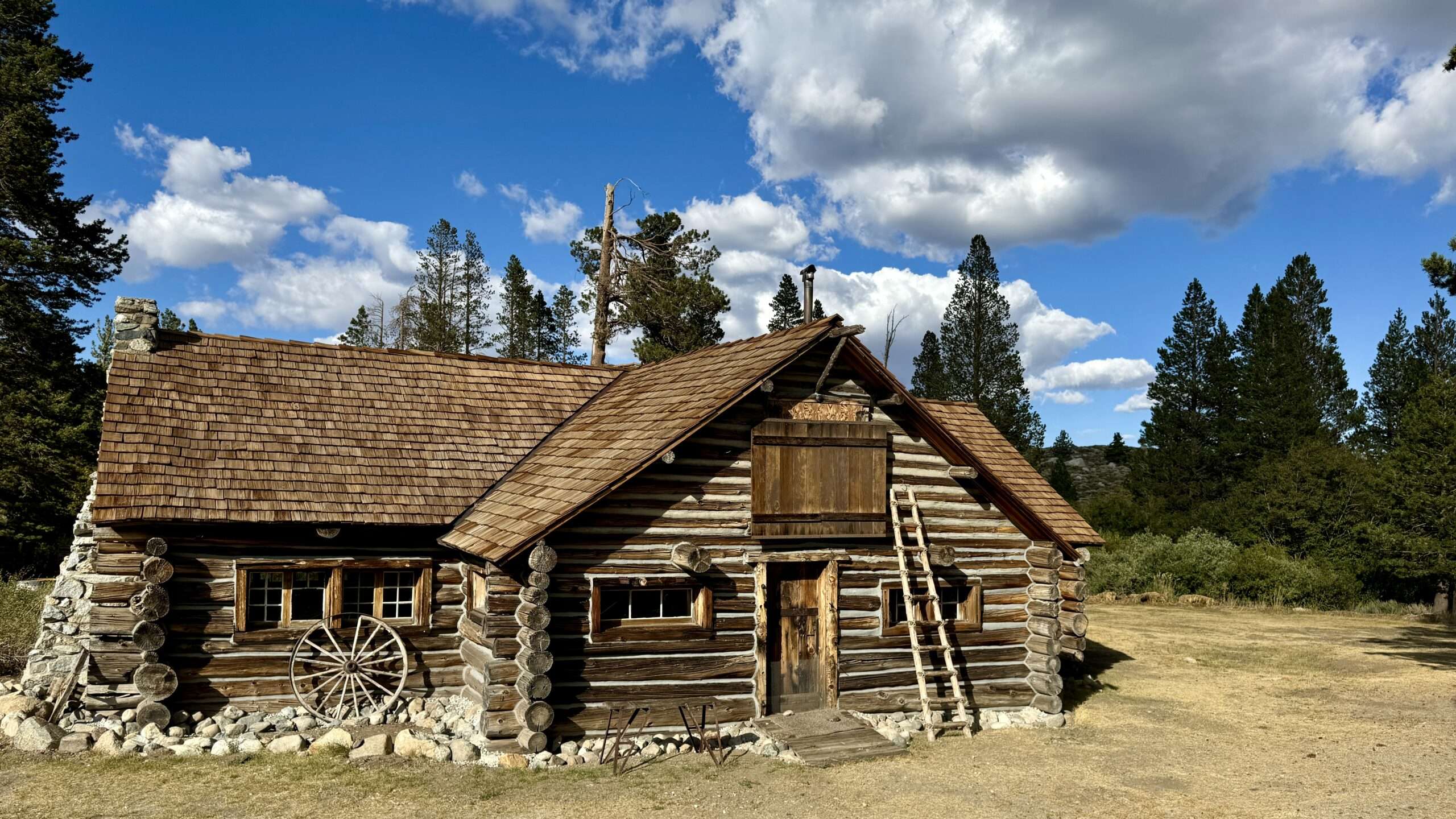
Famous map maker of the Eastern Sierra, Emmett Hayden, built his cabin in the 1920s. It is now a museum and event center. Sadly, the museum closed before I arrived.
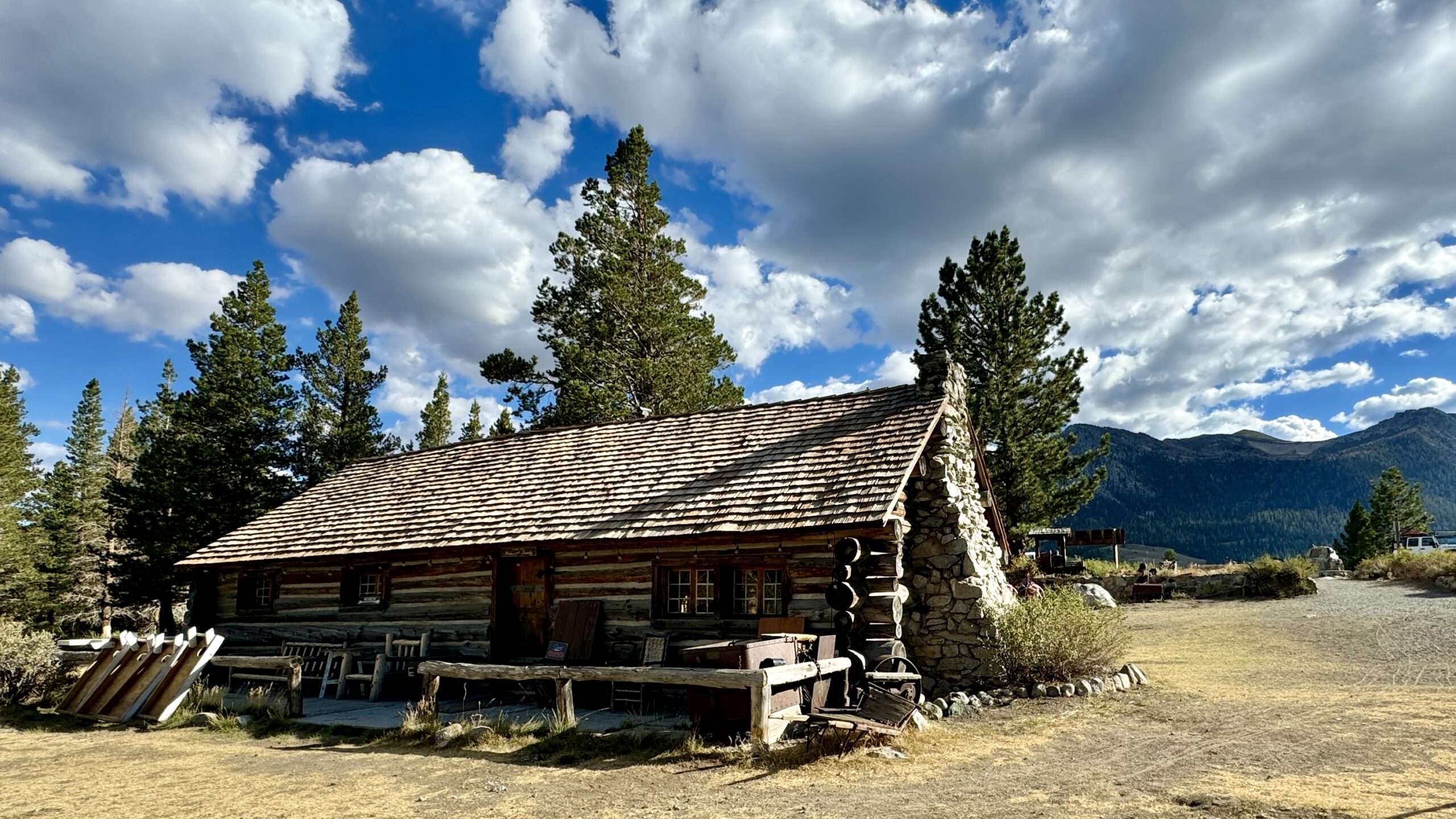
Inyo County
Swansea
In 1869, Colonel Sherman Stevens built the Owens Lake Silver-Lead furnace Mill to process ore from nearby Cerro Gordo. James Brady bought the mill in 1870. He named the town for Swansea, South Wales, the world leader in gold and silver smelting.

Between 1869 and 1874, Swansea became the center for smelting and transporting ore. A pier allowed ore to be transported on the steamship “Bessie Brady” across Owens Lake to Cartago, decreasing travel time from three days to three hours.
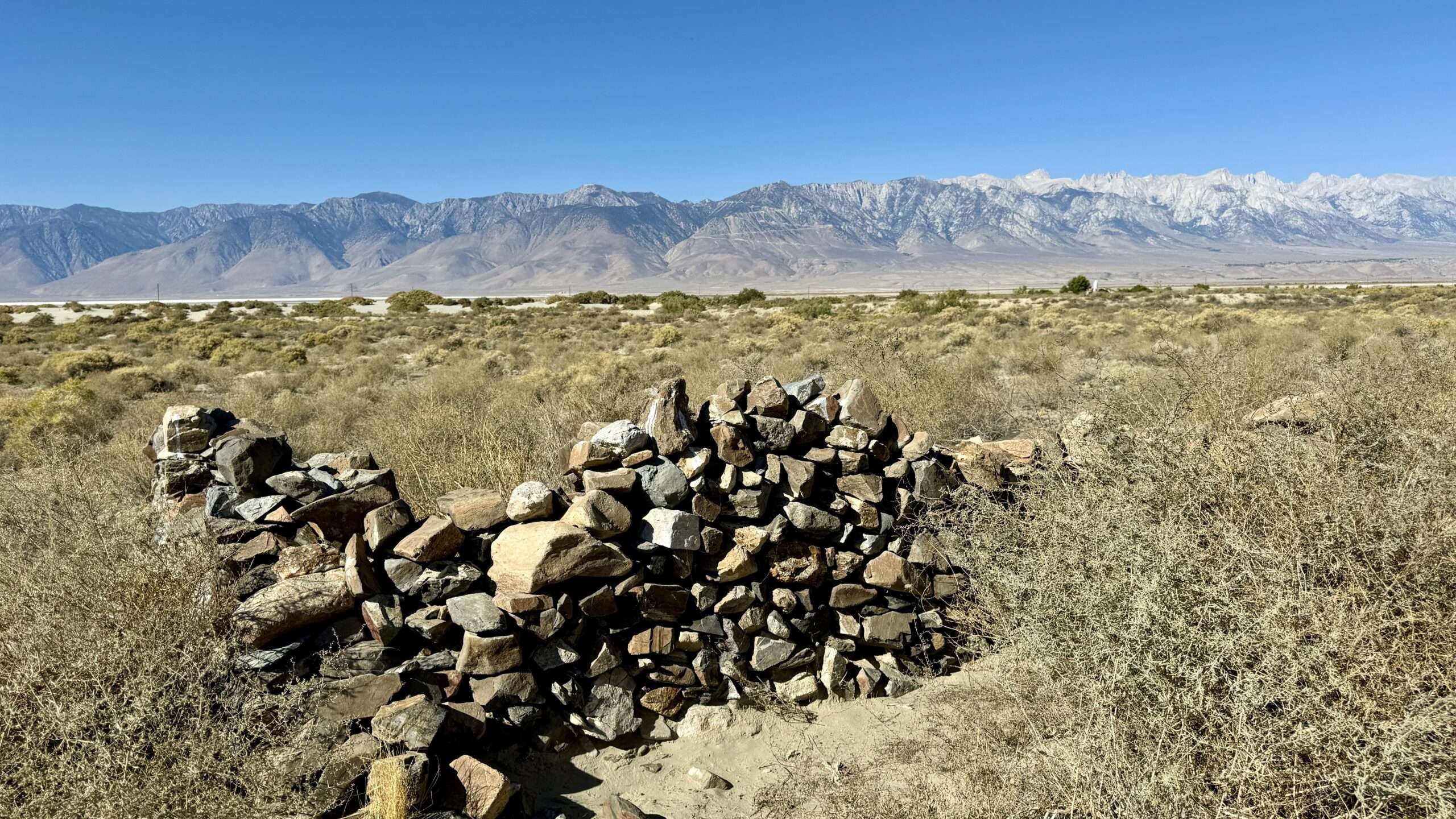
The Lone Pine earthquake in 1872 damaged the smelters at Swansea. The land shifted, raising the shoreline of Lake Owens and preventing steamships from accessing the pier. Most operations shifted a mile south to Keeler. In 1874, thunderstorms caused flash flooding, leaving Swansea under several feet of rock and sand, ending the town.
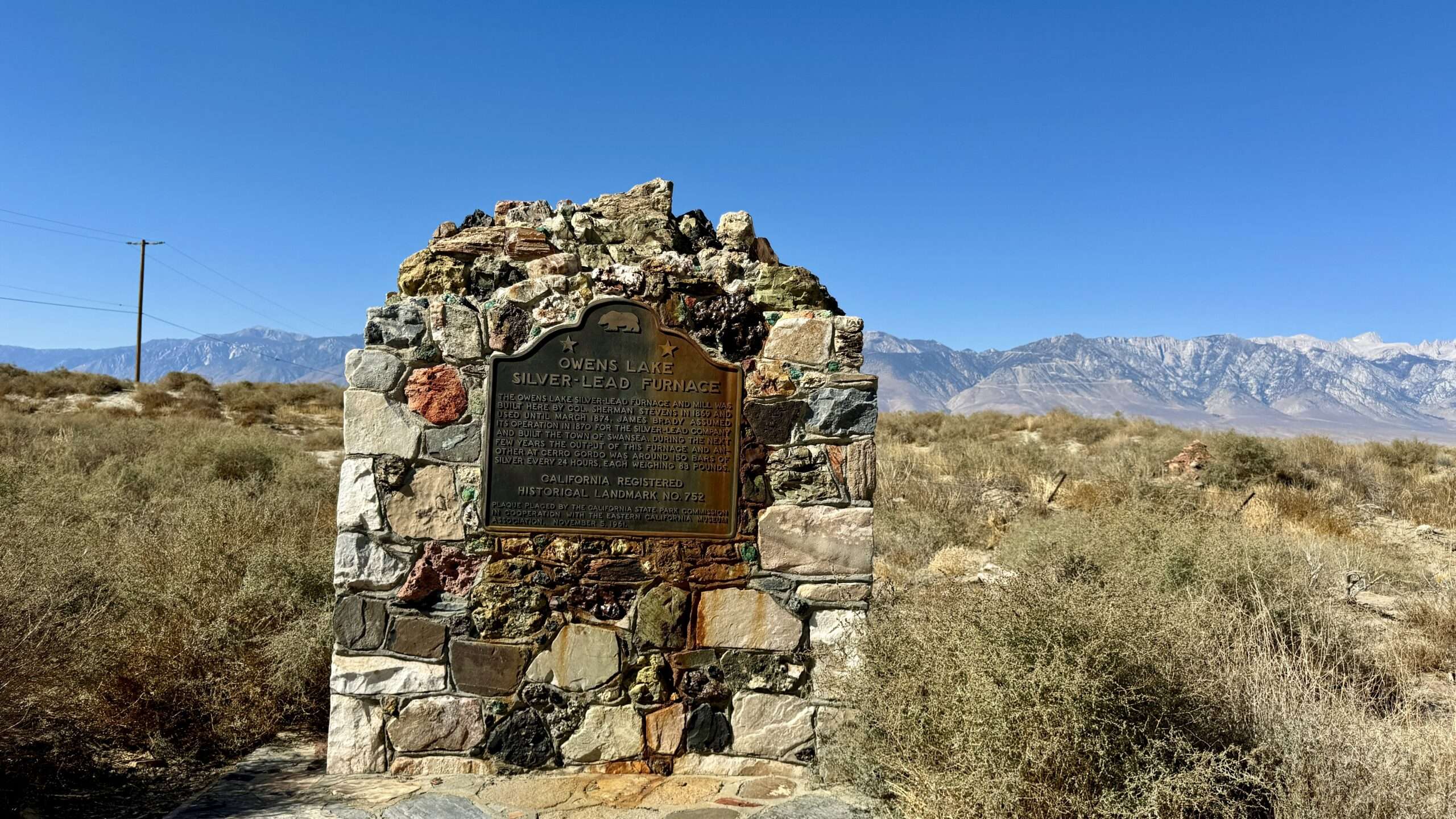
Tramway
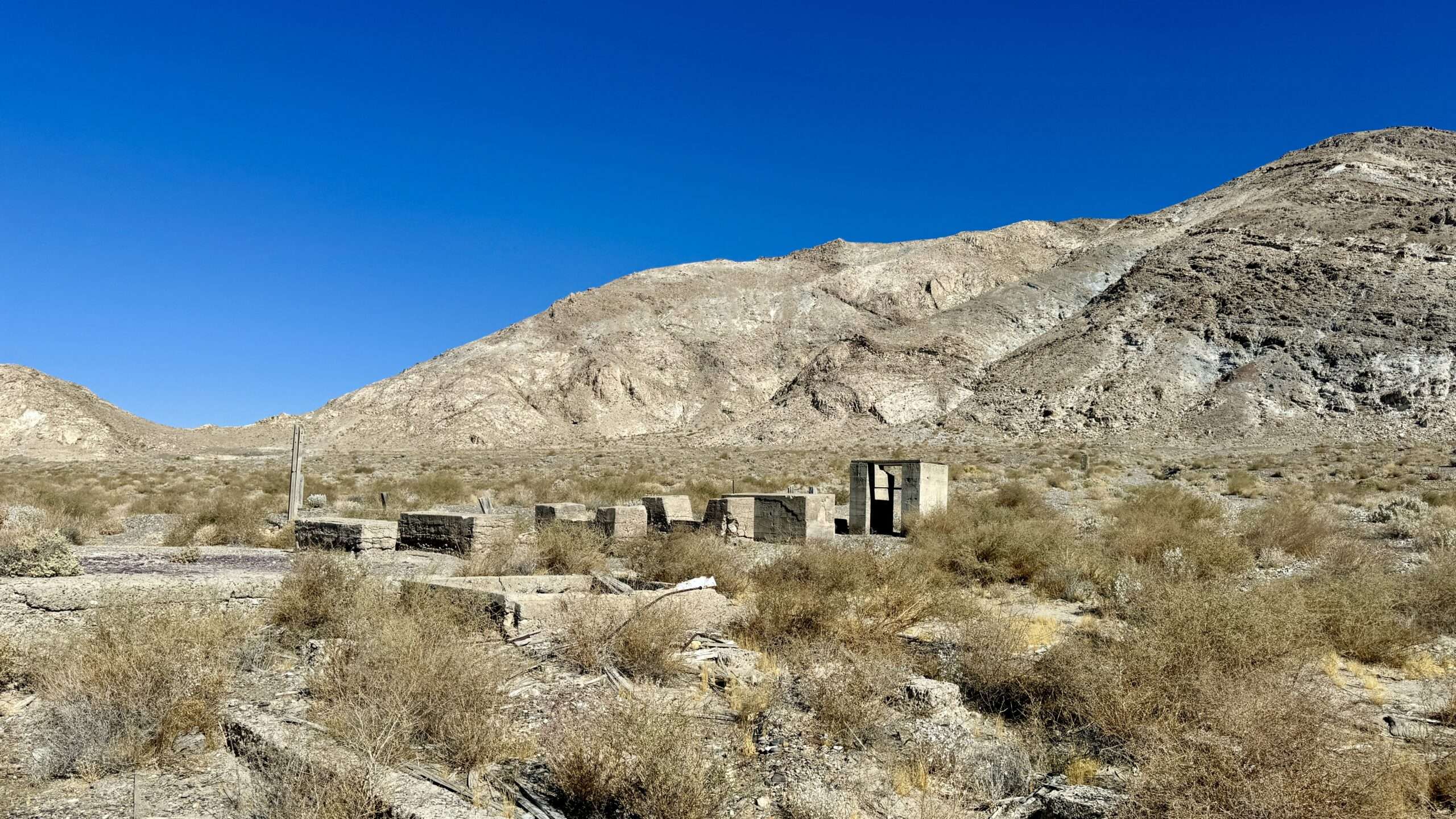
Tramway was well, the bottom of the Saline Valley Salt Tram. They constructed an electrical aerial tramway between 1911 and 1913.
The tram cost 750,000 dollars, between a quarter and half a million dollars more than estimated, driving the Saline Valley Salt Company into financial ruin. Three more companies operated the tram, each with the same outcome. Owens Valley Salt Company assumed the tram in 1915, operating for three years until the company entered bankruptcy.
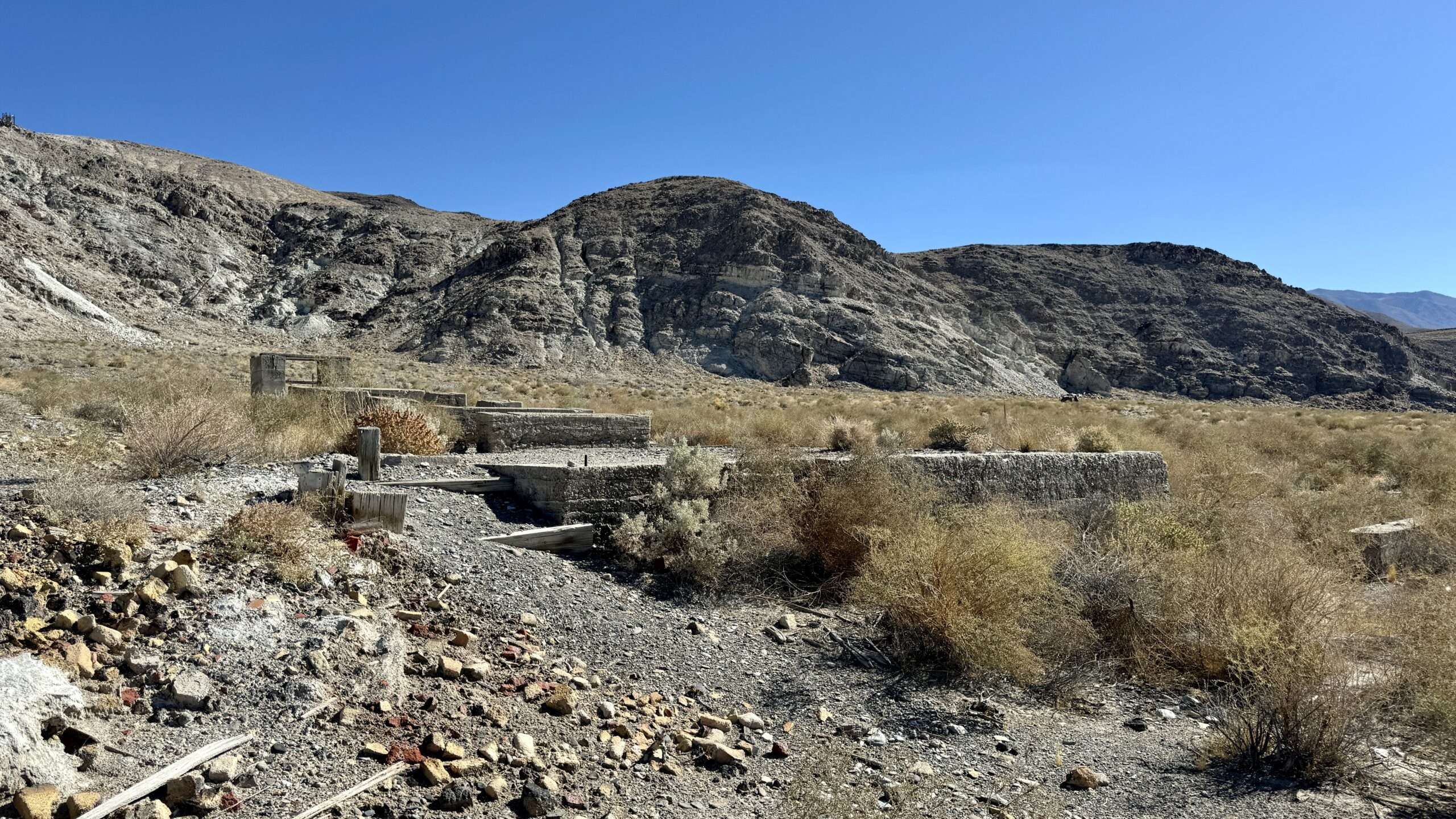
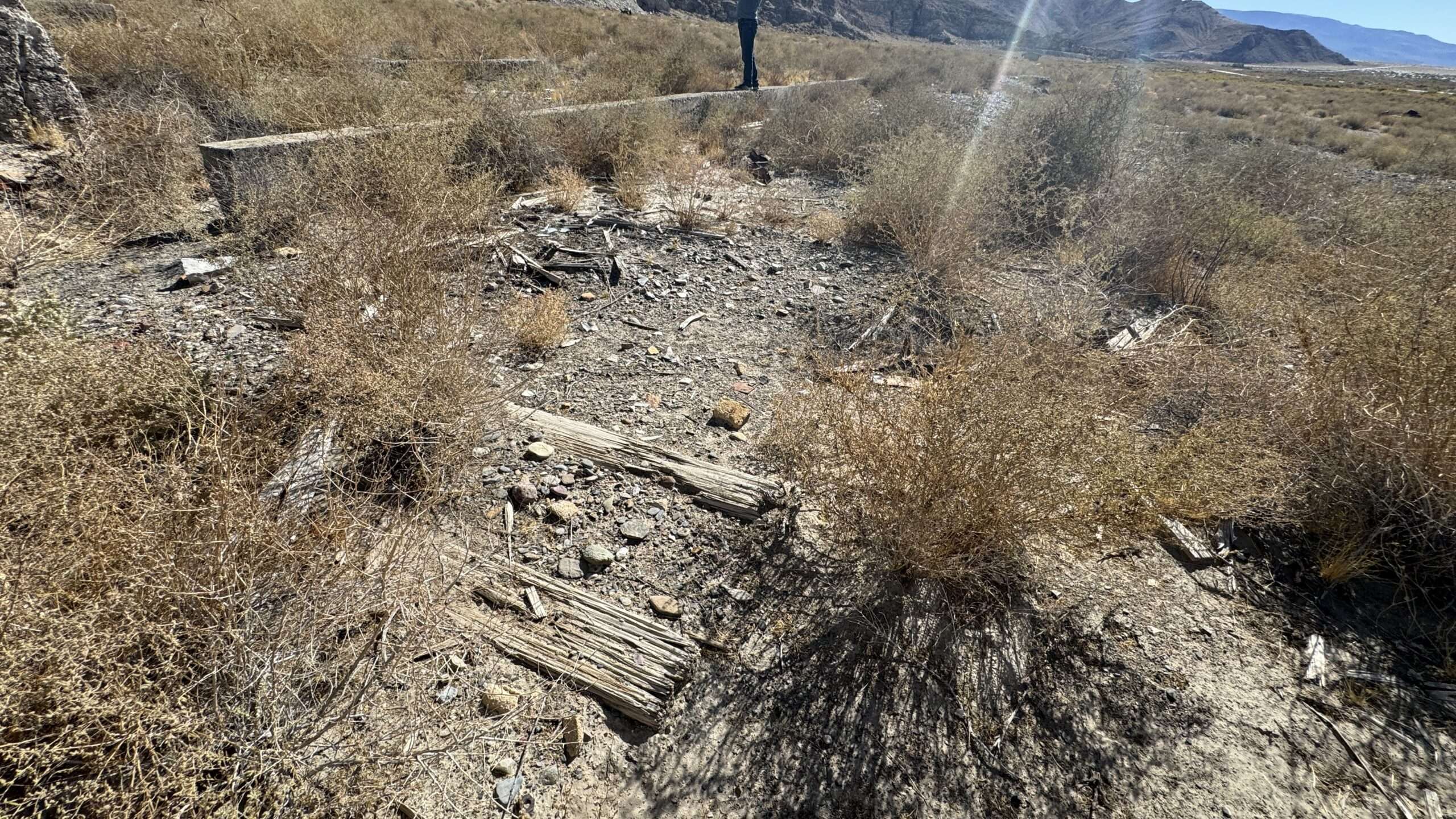

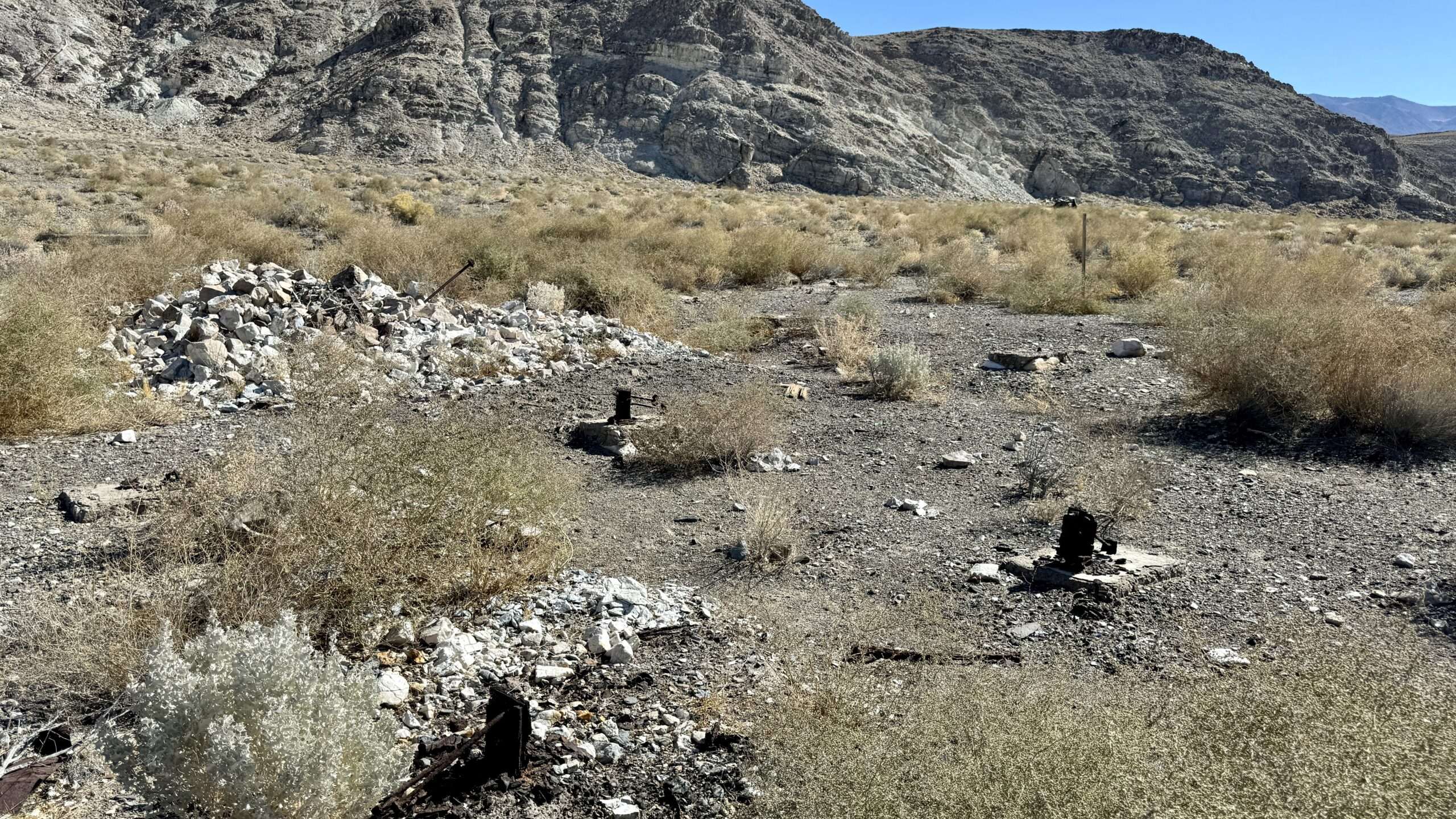
Cerro Gordo
We made a quick stop at the famous ghost town. As a trip with friends Steve and Kris to explore more in-depth is planned, I only grabbed a few photos. Before you ask, I didn’t meet Brent. During our visit, he was 700′ feet down a mine. As we pulled over to take photos of the tram, he drove past. I almost chased after his truck, holding out his book to sign!
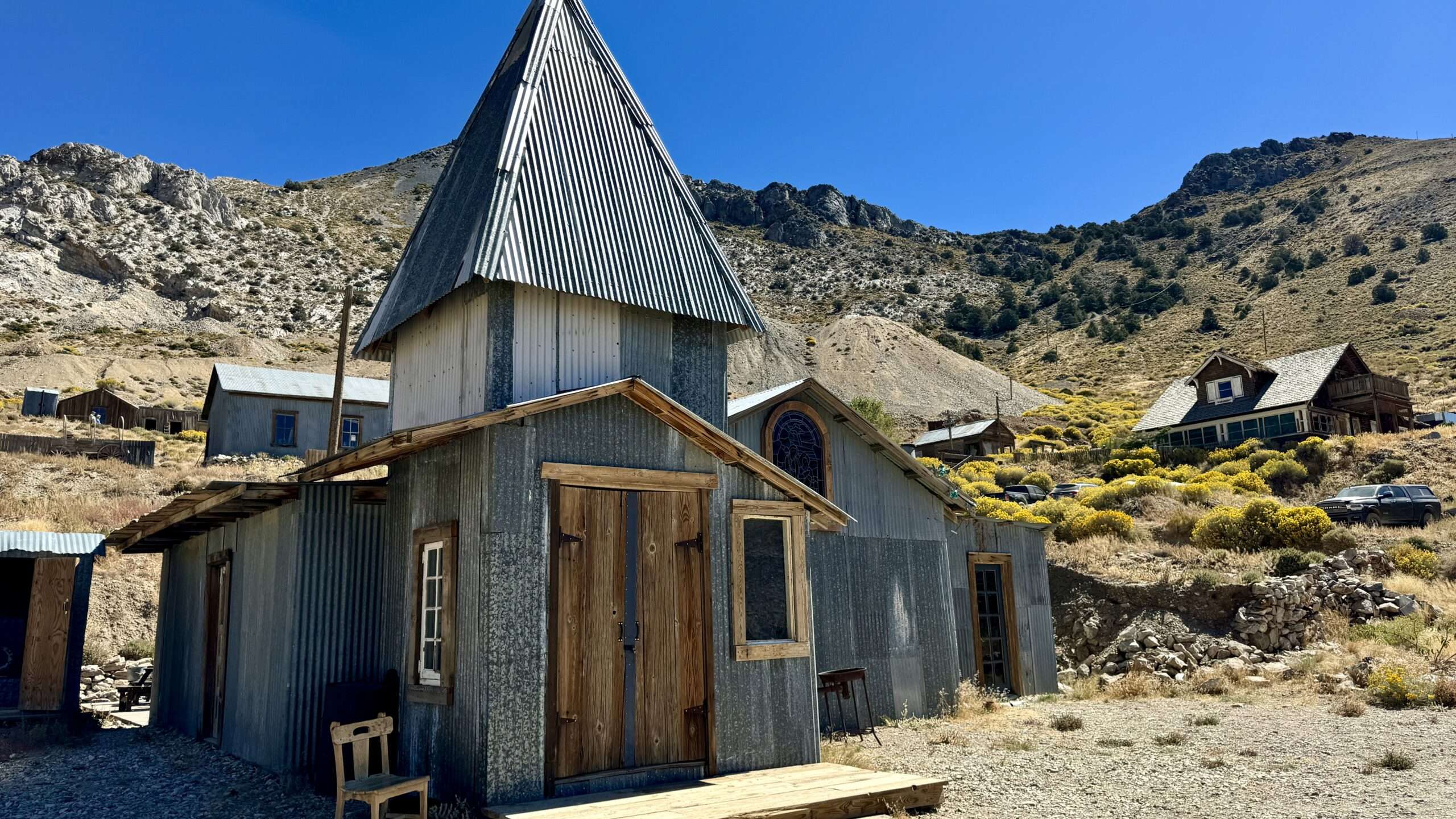
Pablo Flores, a miner from Mexico, discovered silver ore above the Owens Valley in 1865. The mines were named Cerro Gordo, which is Spanish for “Fat Hill.” Word spread, and by 1866, a settlement had been formed. Victor Beaudry of Independence saw potential and opened the first store. Beaudry assumed multiple mining claims from miners to settle their debts and constructed two smelters to process ore. As miners accumulated more unpaid debt, Beaudry continued to acquire more claims until he owned the majority of the mines in Cerro Gordo.
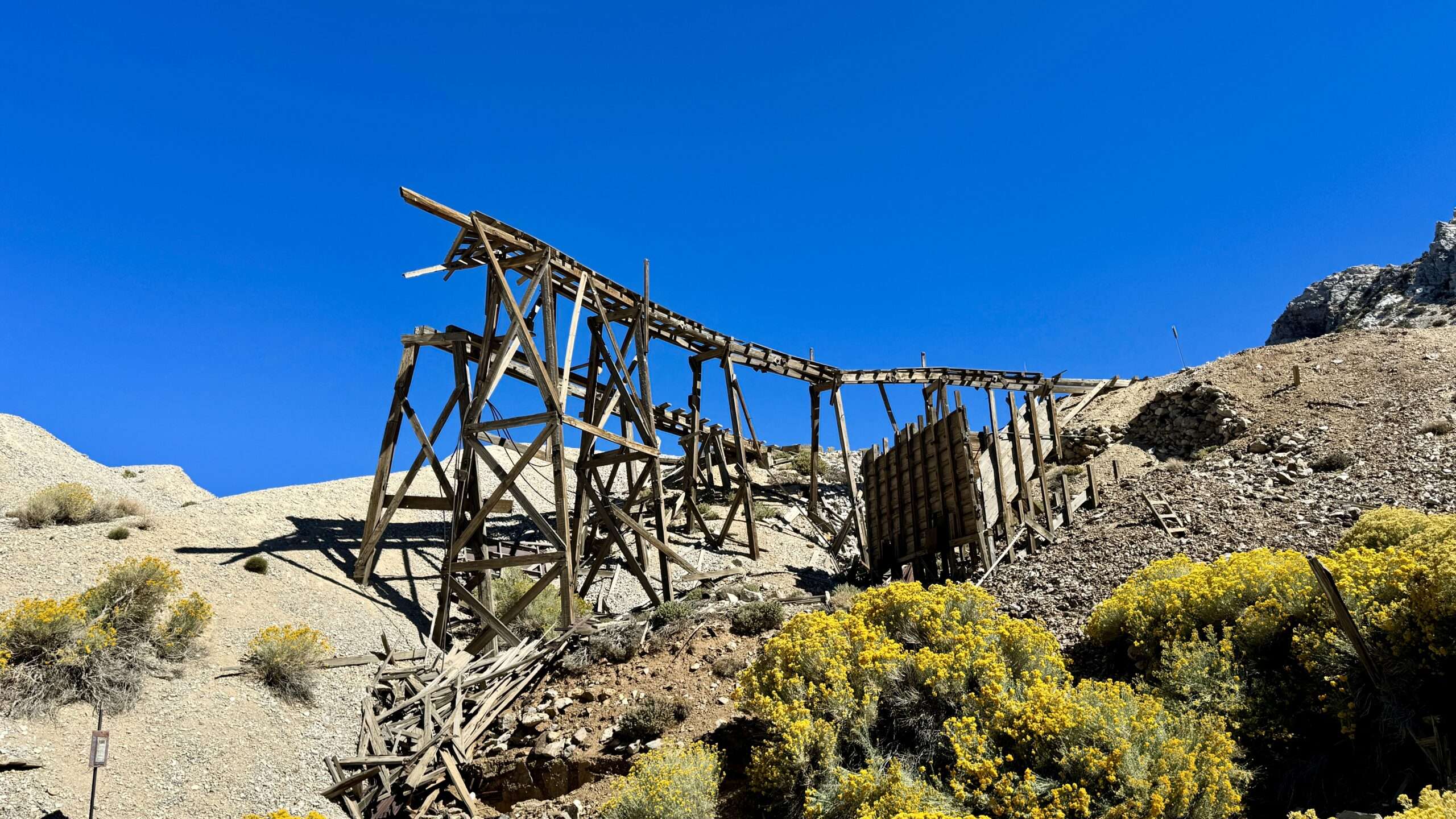
Cerro Gordo became California’s largest silver and lead producer within three years. Mule teams transported silver between Cerro Gordo and Los Angeles. While smelters processed ore on site, mines shipped most ore via wagons and steamships across Owens Lake to Swansea and Keeler.
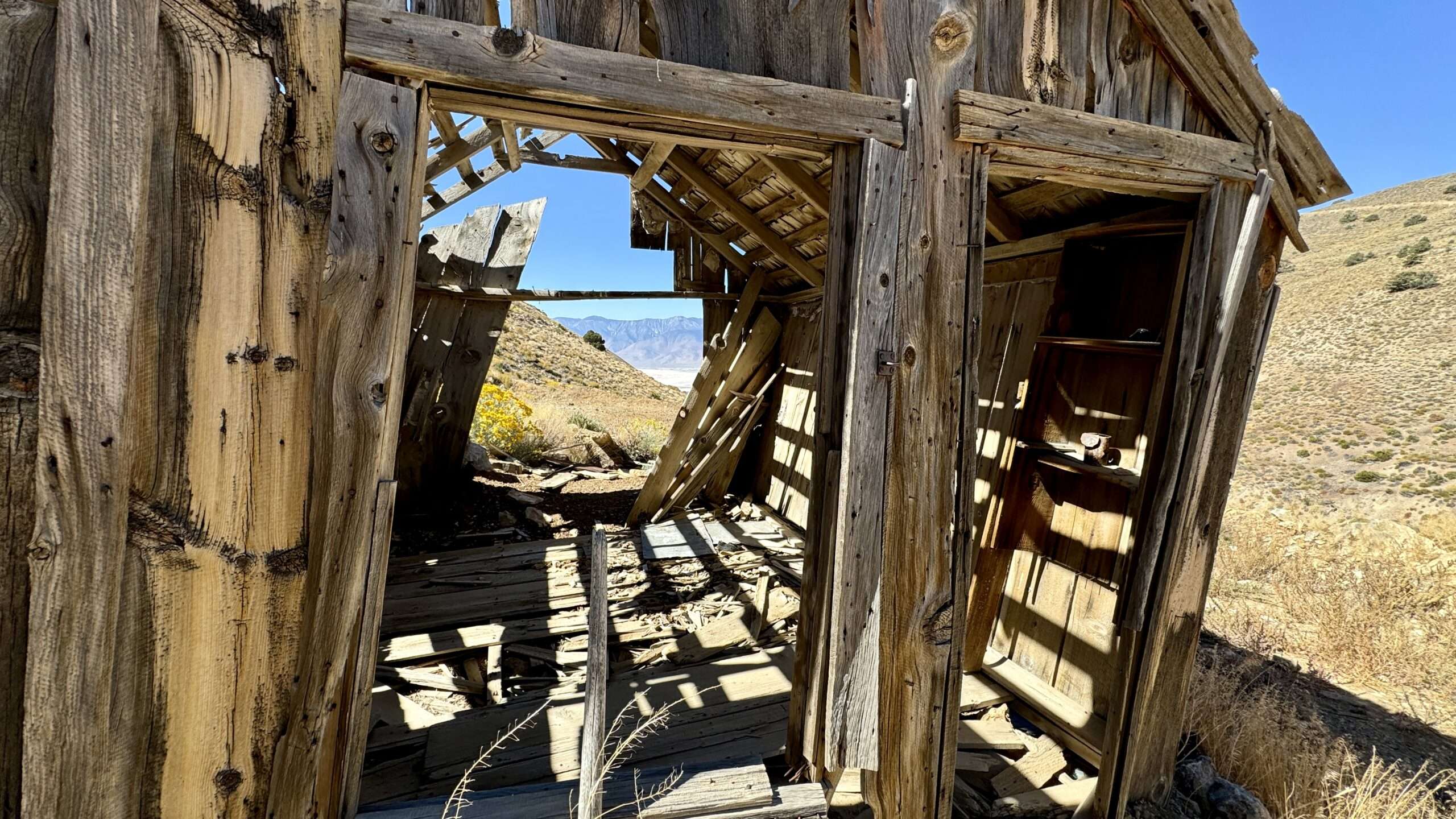
Hotel restoration is progressing, they were roofing during out visit.
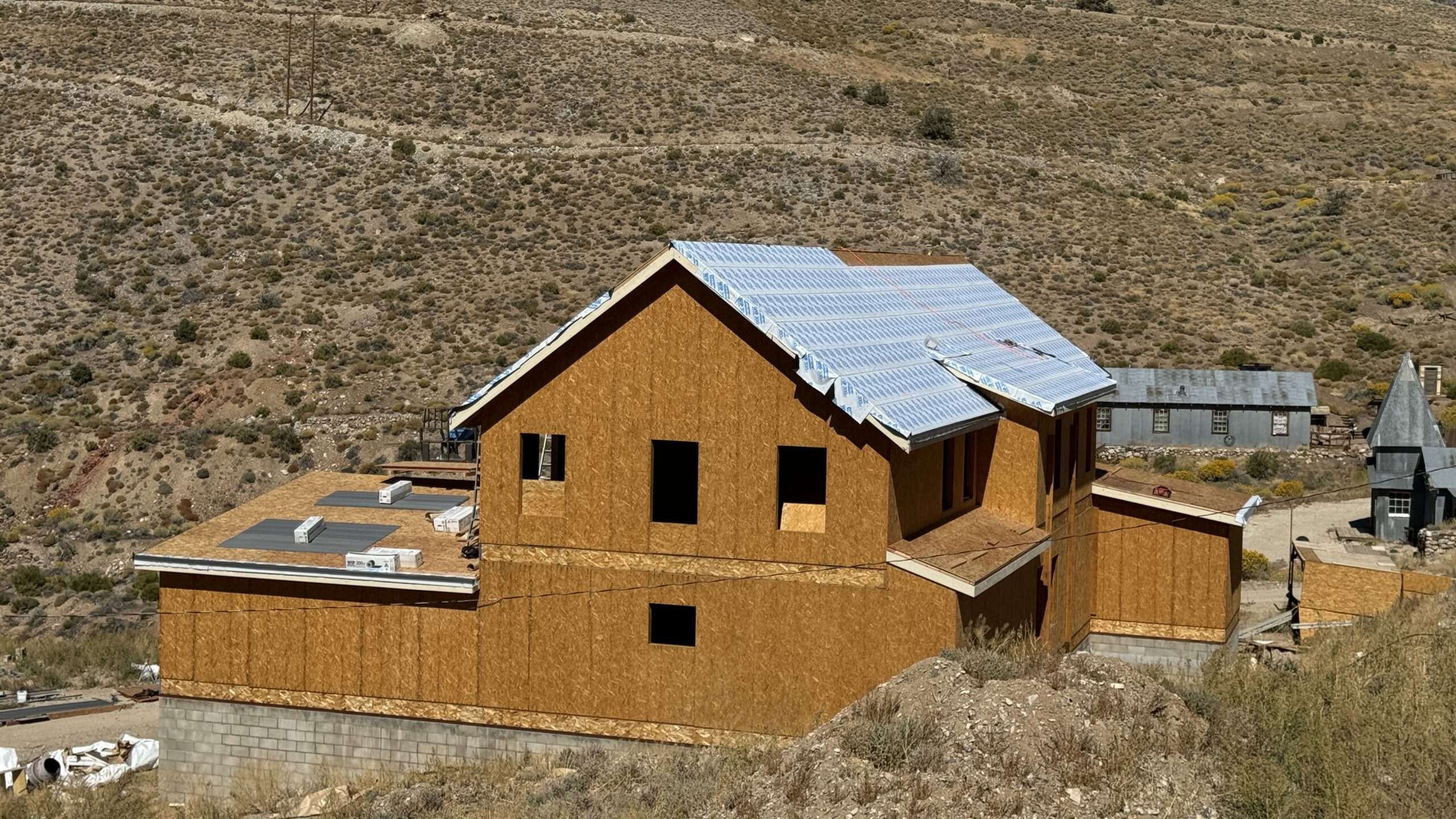
Sunset Mine
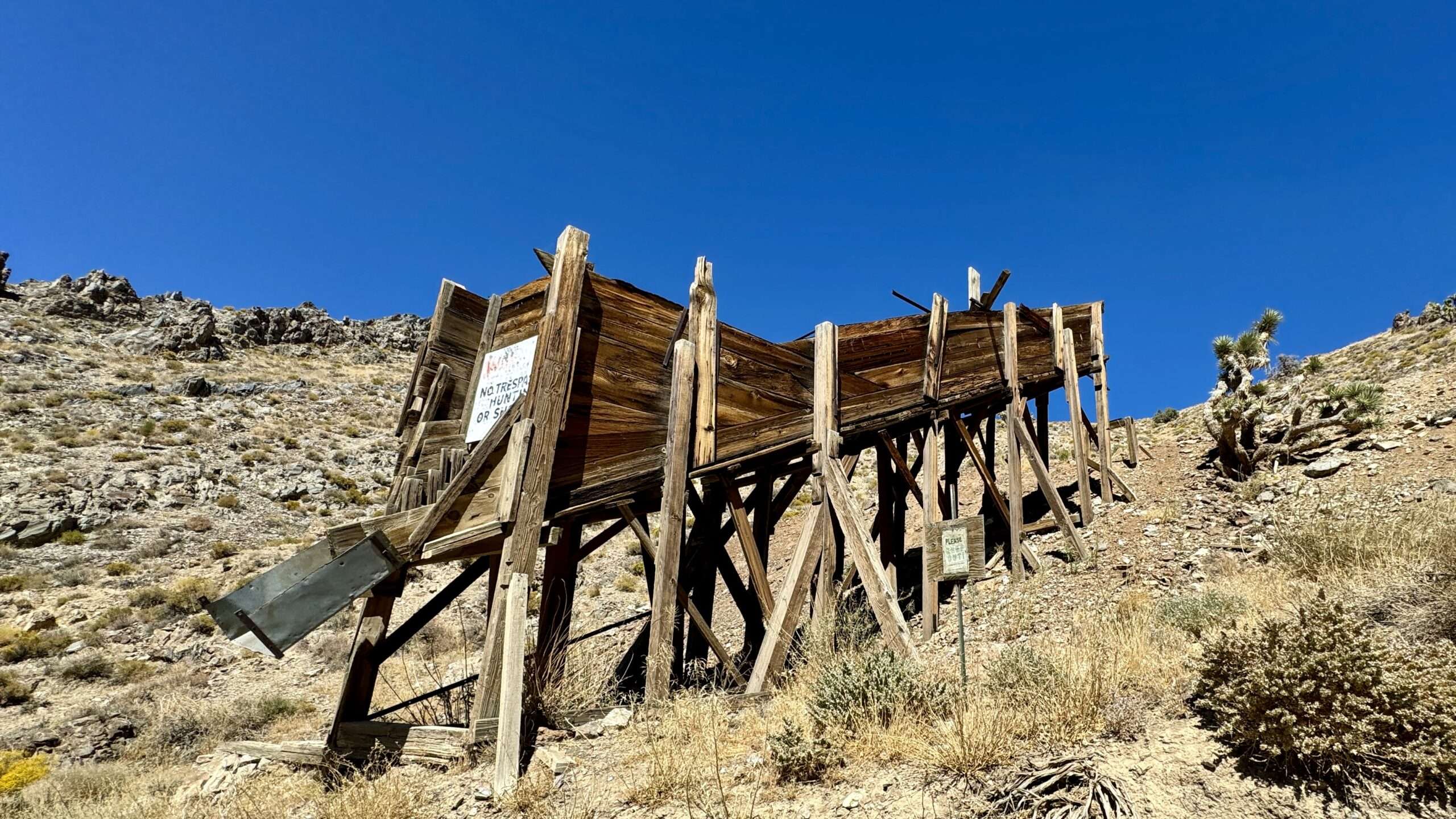
The Sunset Mine sits alongside the road to Cerro Gordo. On first glance, I didn’t find much information other than it is one of many mines in the district.
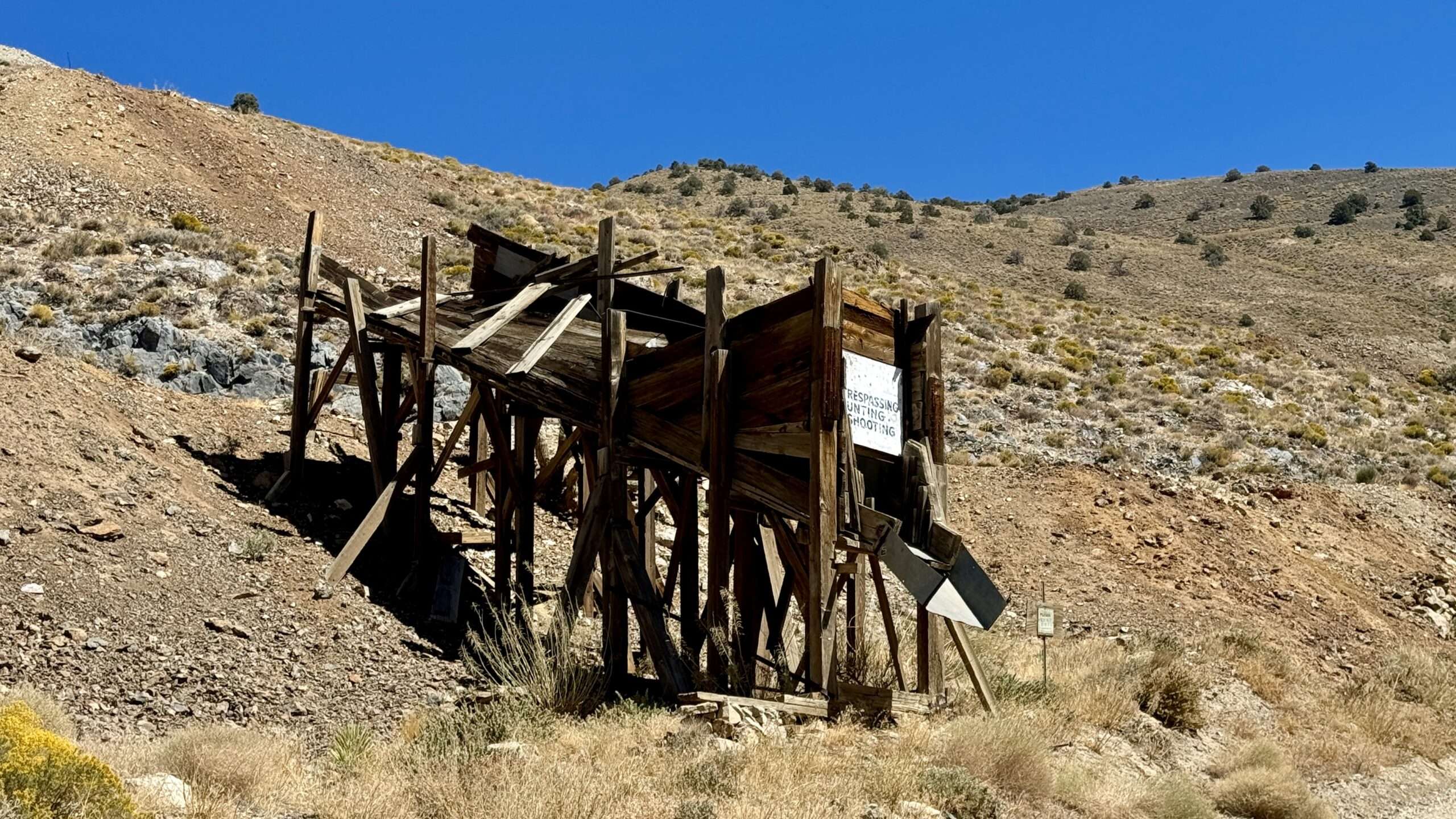
Tramway and rock ruin
A tramway connected the mines of Cerro Gordo to the Four Metals Company mill, outside of Kealer. Tram towers are in carrying shape, at least one cable had an ore cart still attached.
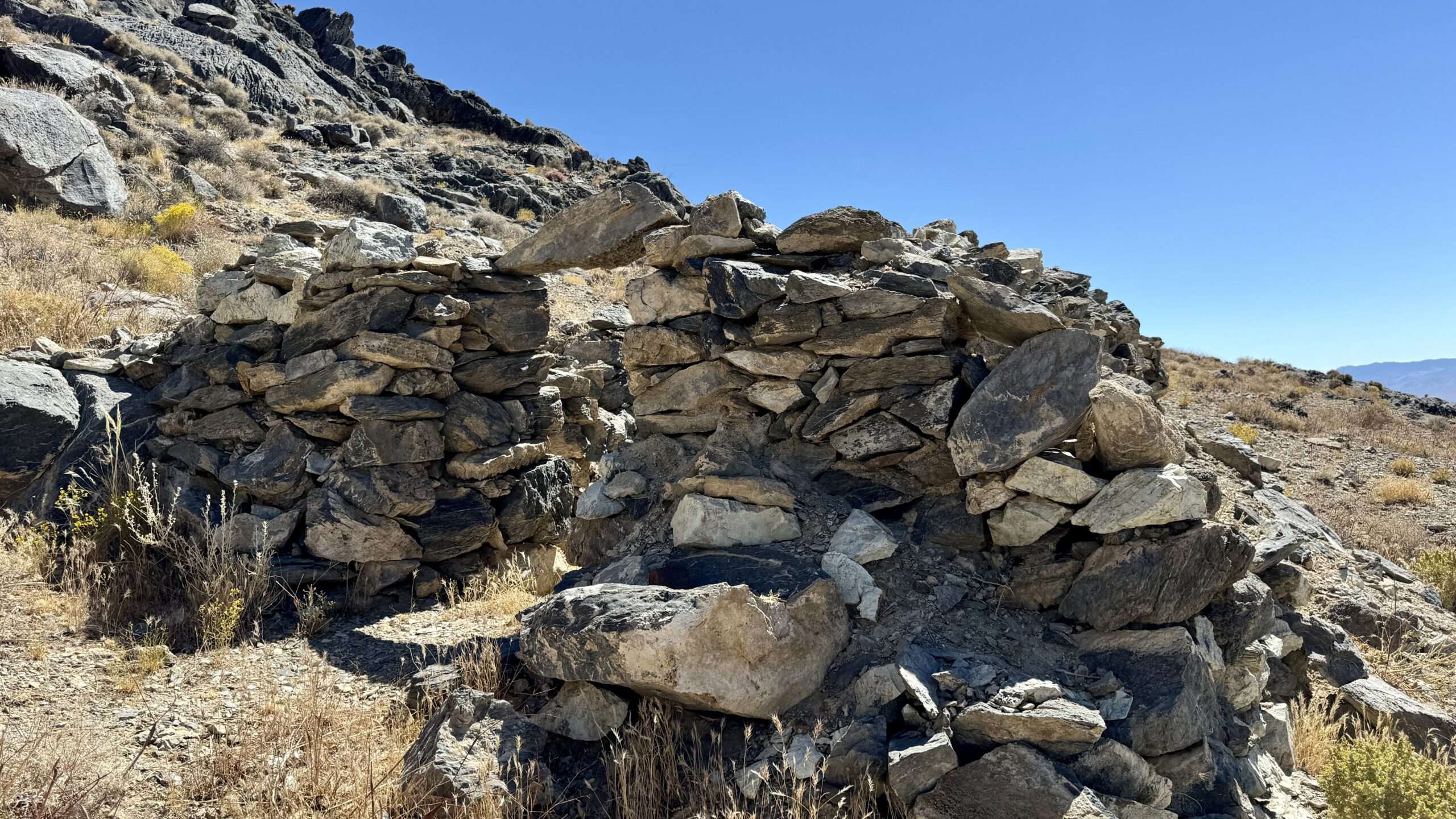
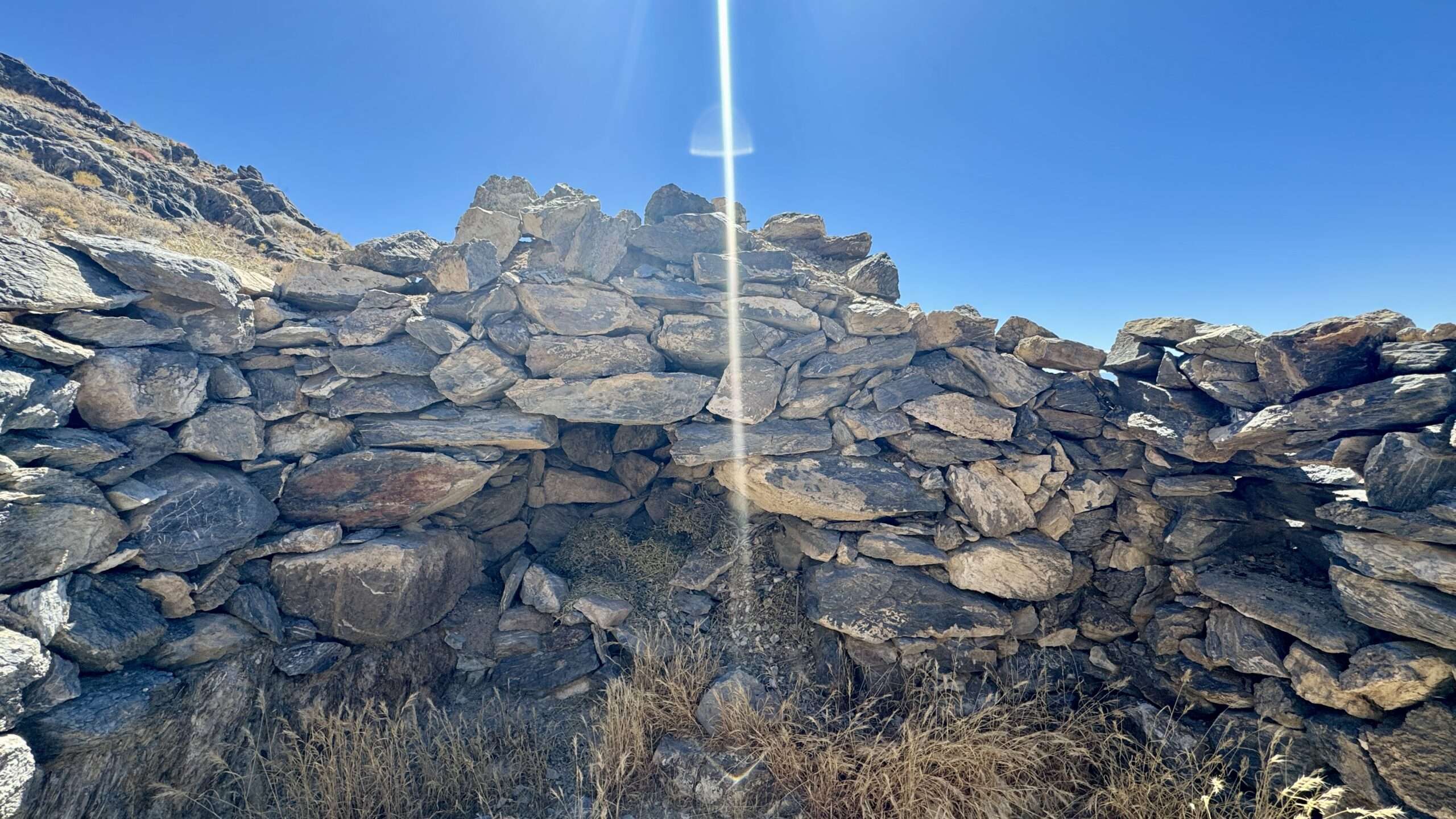
Four-metals Company Mill
Cerro Gordo’s ore was processed at the Four Metals Company Mill. An aerial tram connected it to the mines.
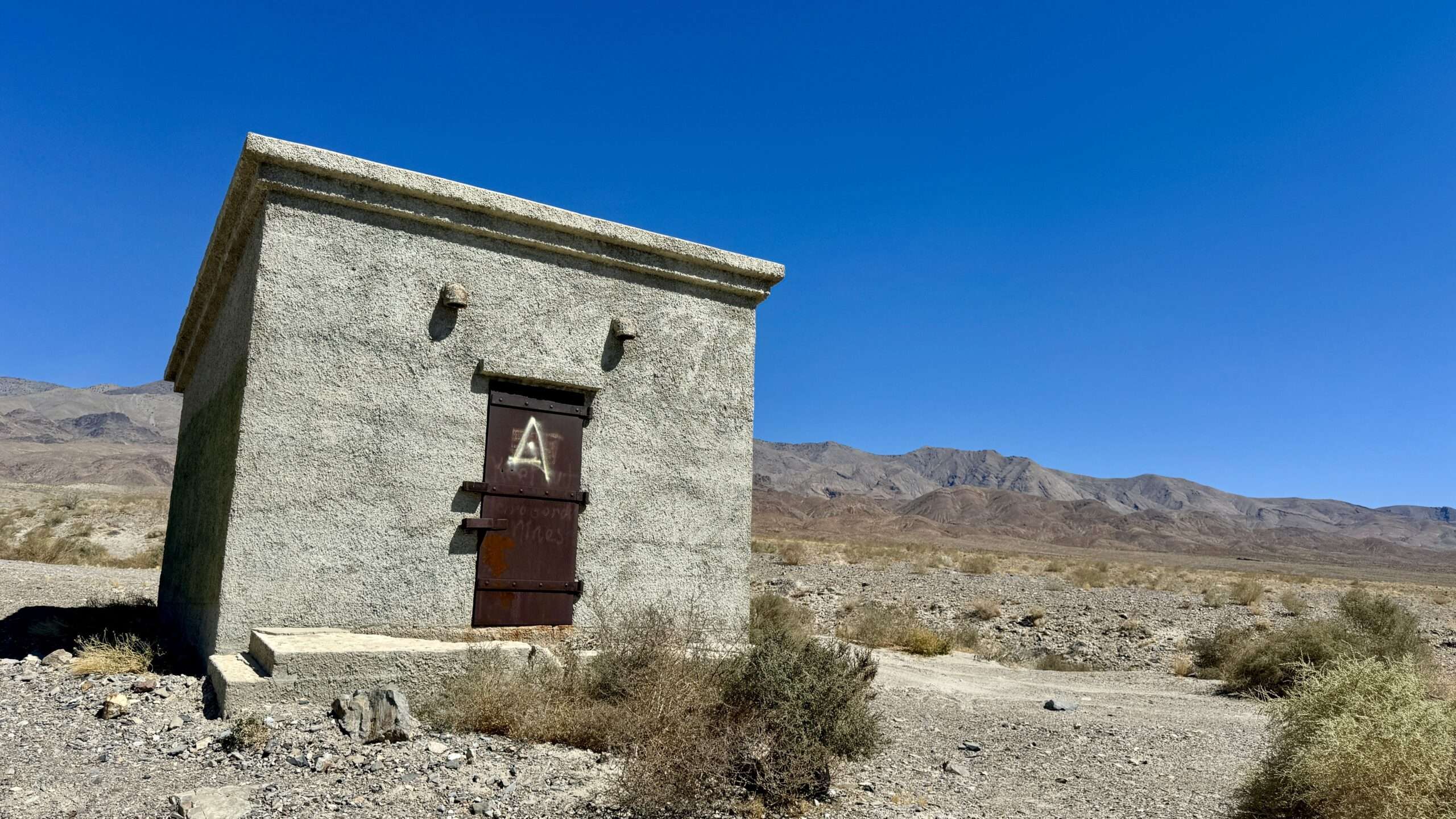
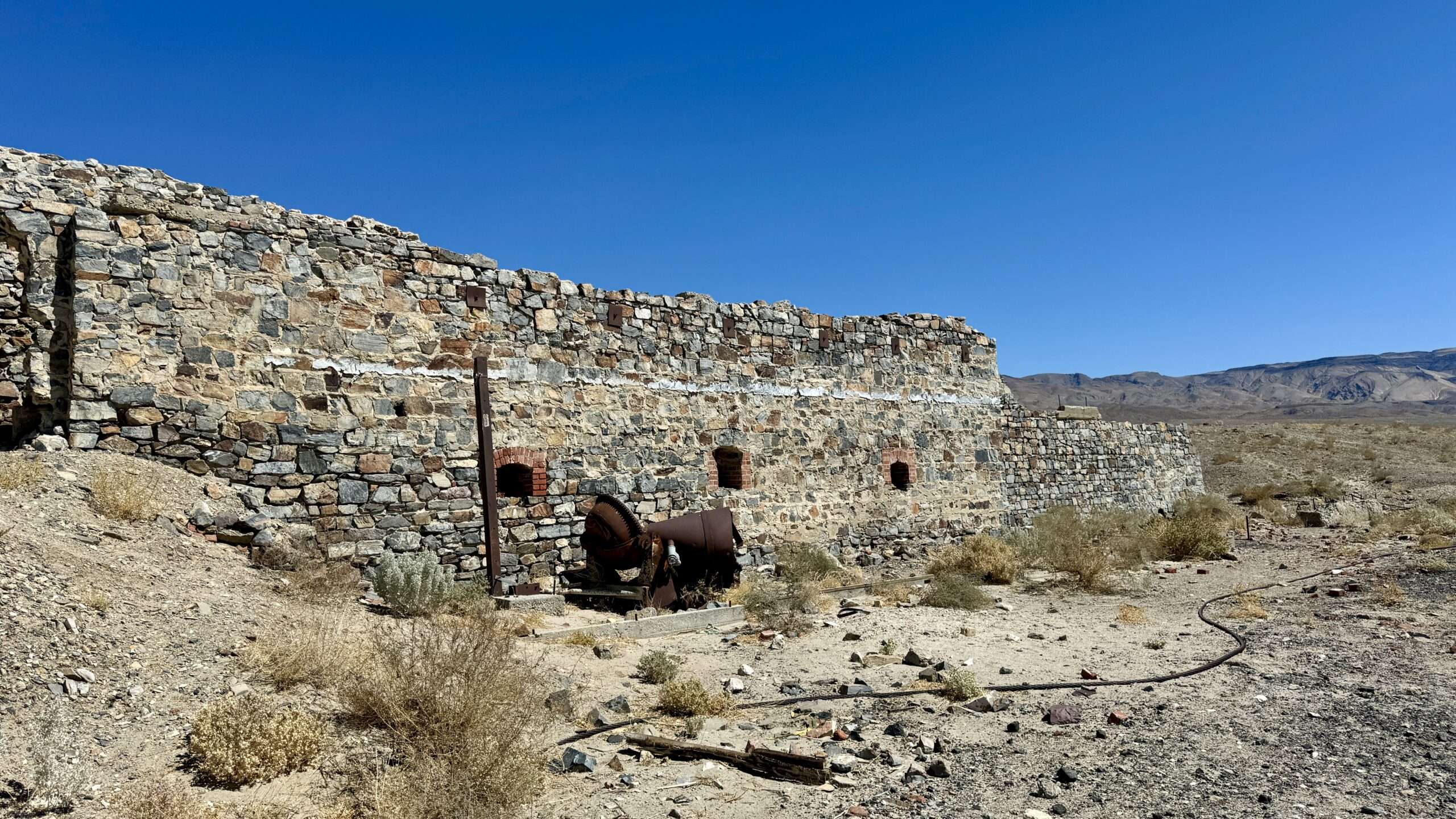
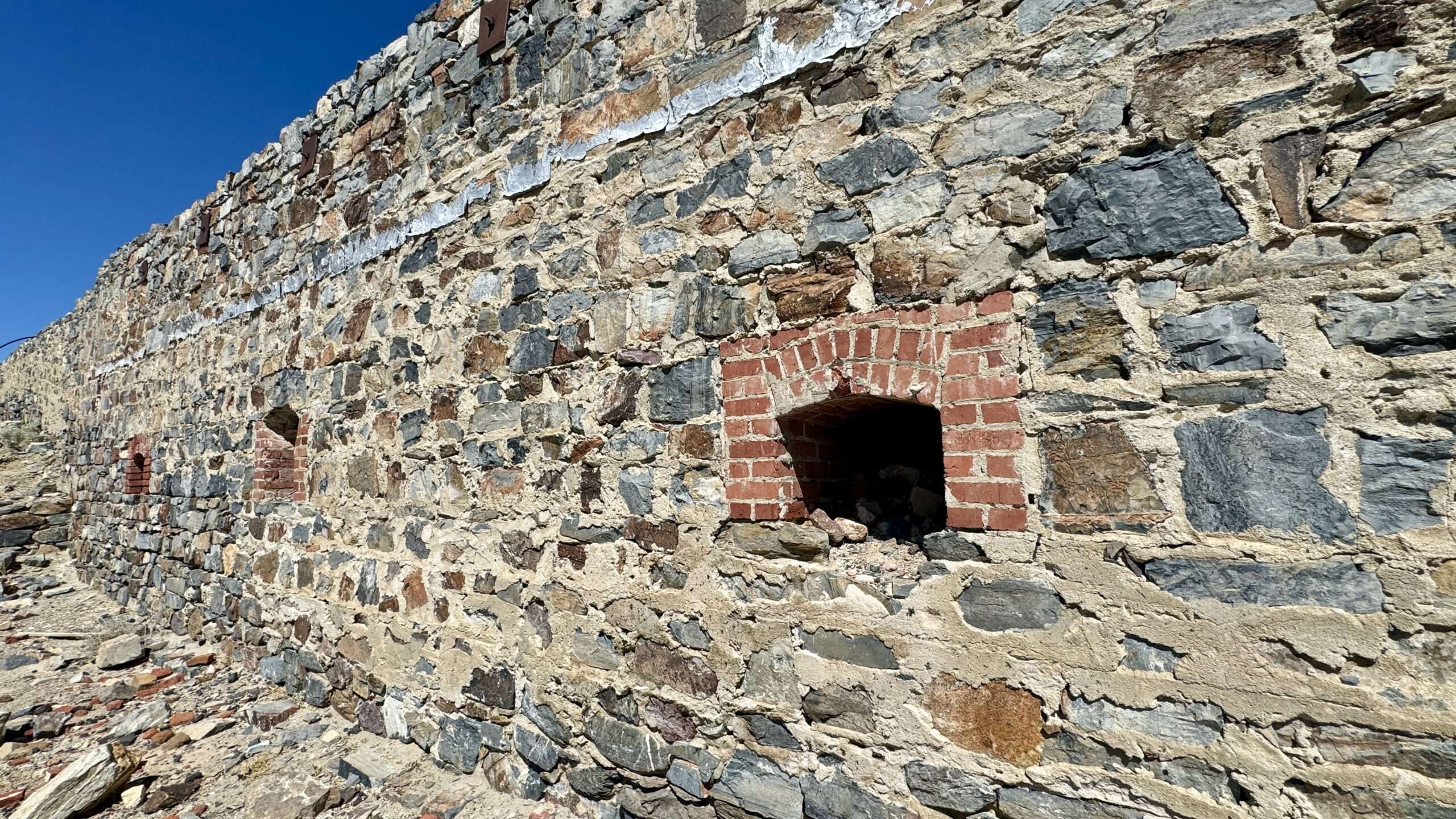
Wildrose Kilns
In 1877, a company man only known to history as Morris led the Modock Consolidated Mining Company, which built ten beehive charcoal kilns in Wildrose Canyon to fuel the Modoc mills.
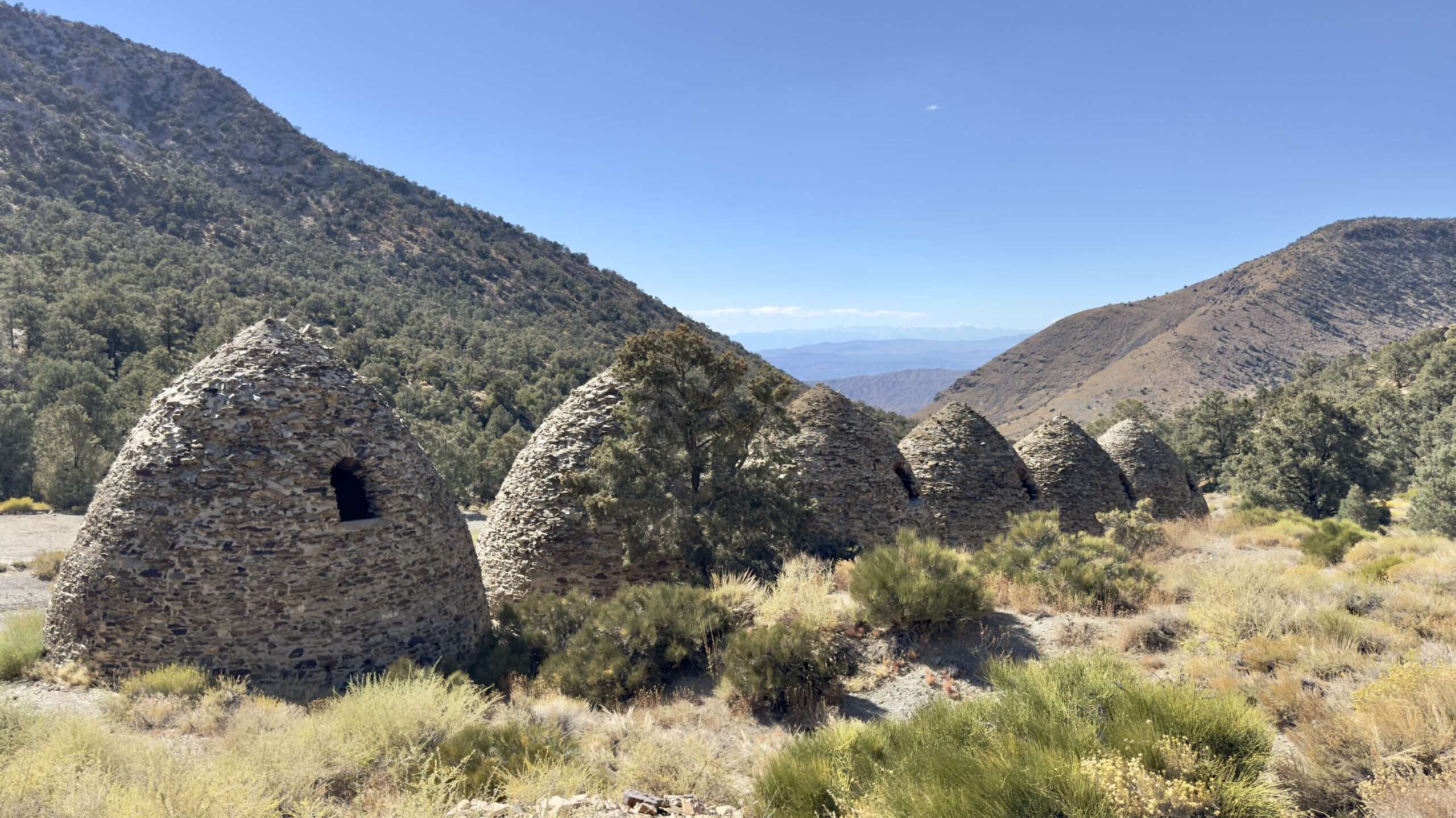
The Wildrose Kilns operated for only two years. Due to their short lifespan, remote location, and inclusion in Death Valley National Park, the kilns are the best preserved on the West Coast.

Wildrose CCC Camp
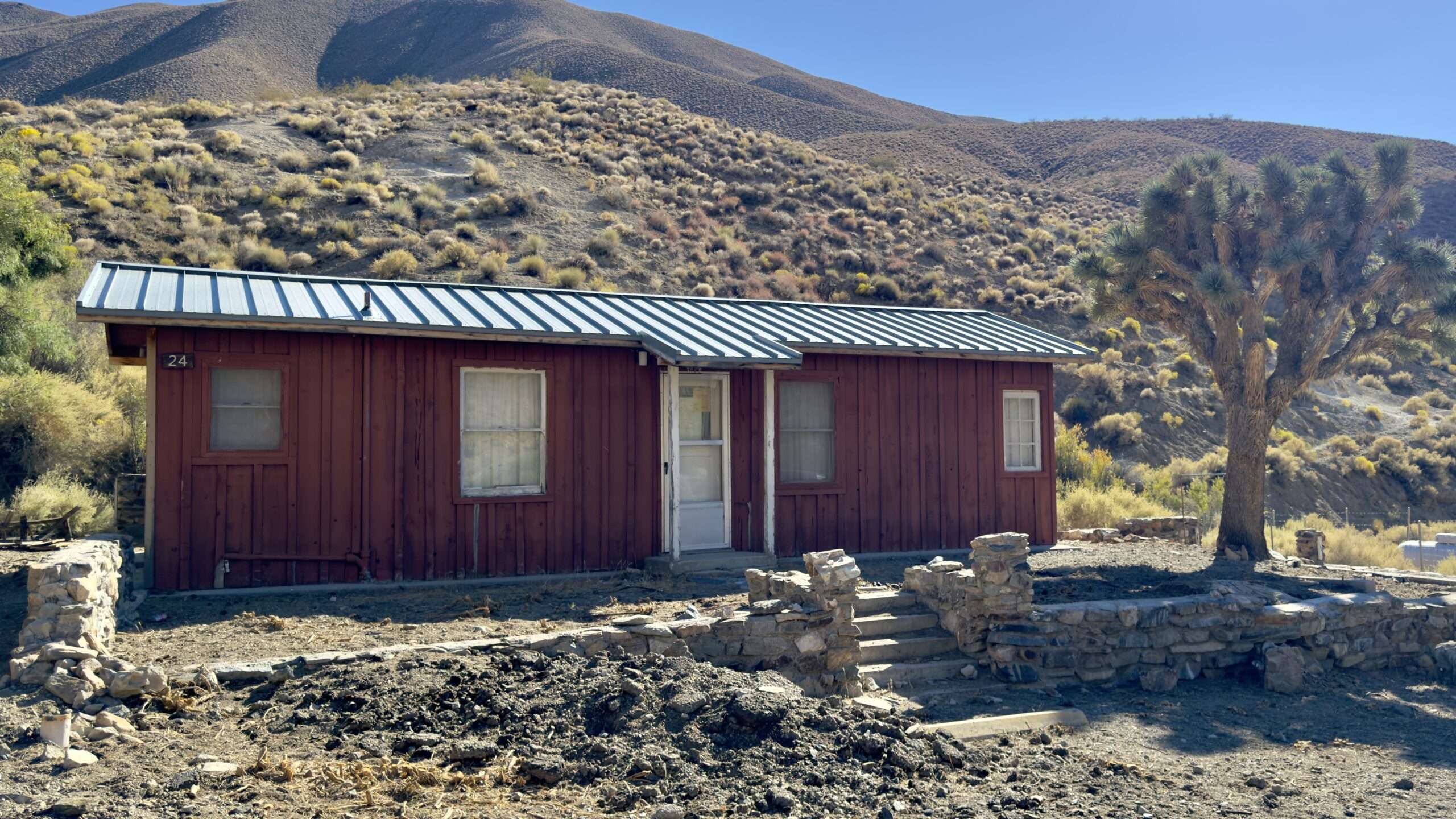
Death Valley contained three CCC Camps, along with smaller spurs. They built campgrounds, trails and facilities.
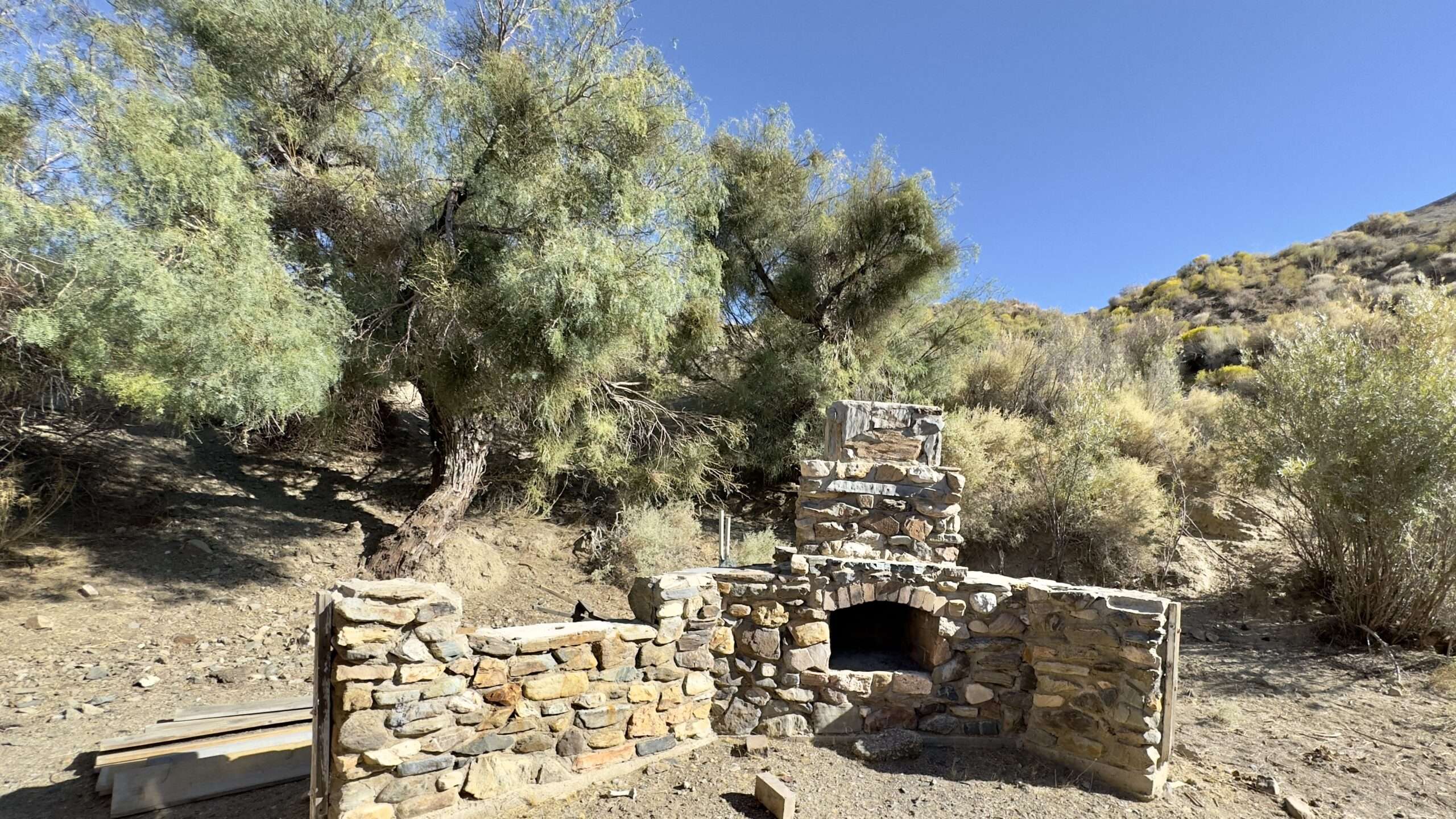
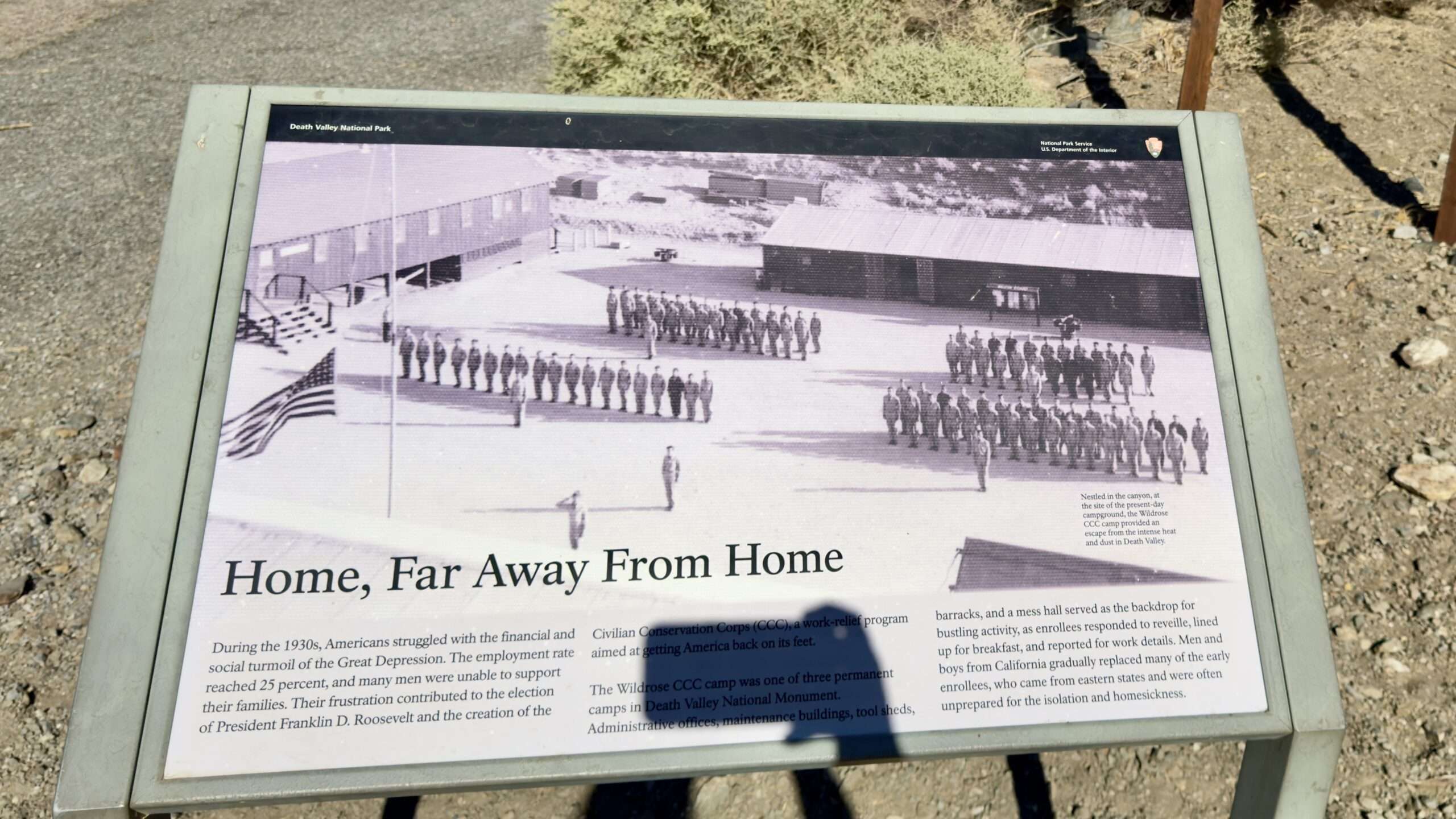
Harrisburg, Aguereberry and Eureka Mine
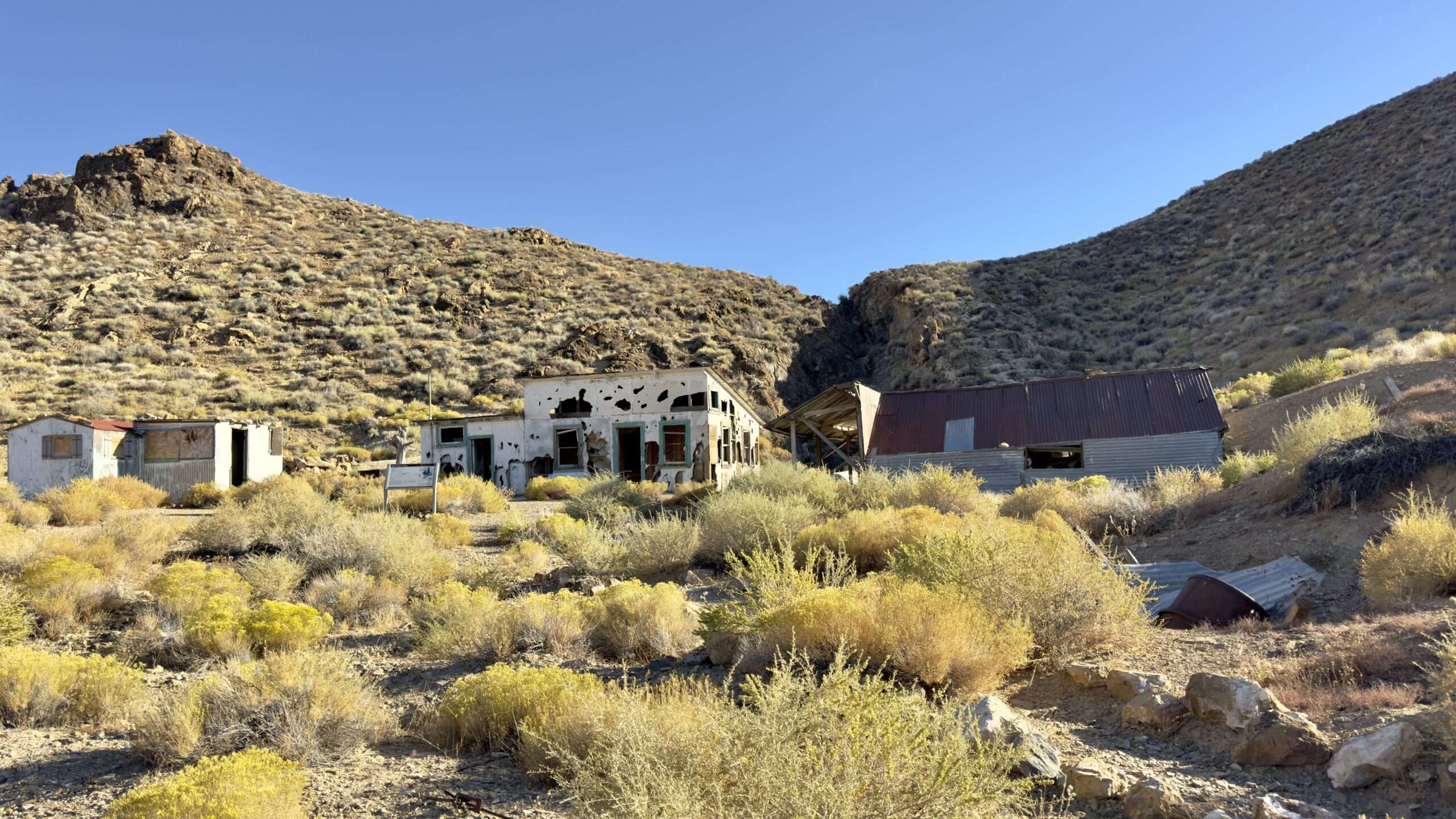
Famed Death Valley prospector Frank “Shorty” Harris and his friend, Pete Aguereberry, staked gold claims in Panamint Ranch in 1905. Shorty had a reputation for being able to “smell gold.” He discovered many famous mines, including the Bullfrog mine in Nevada. Shorty never worked the mines himself; he preferred saloons to hard work.
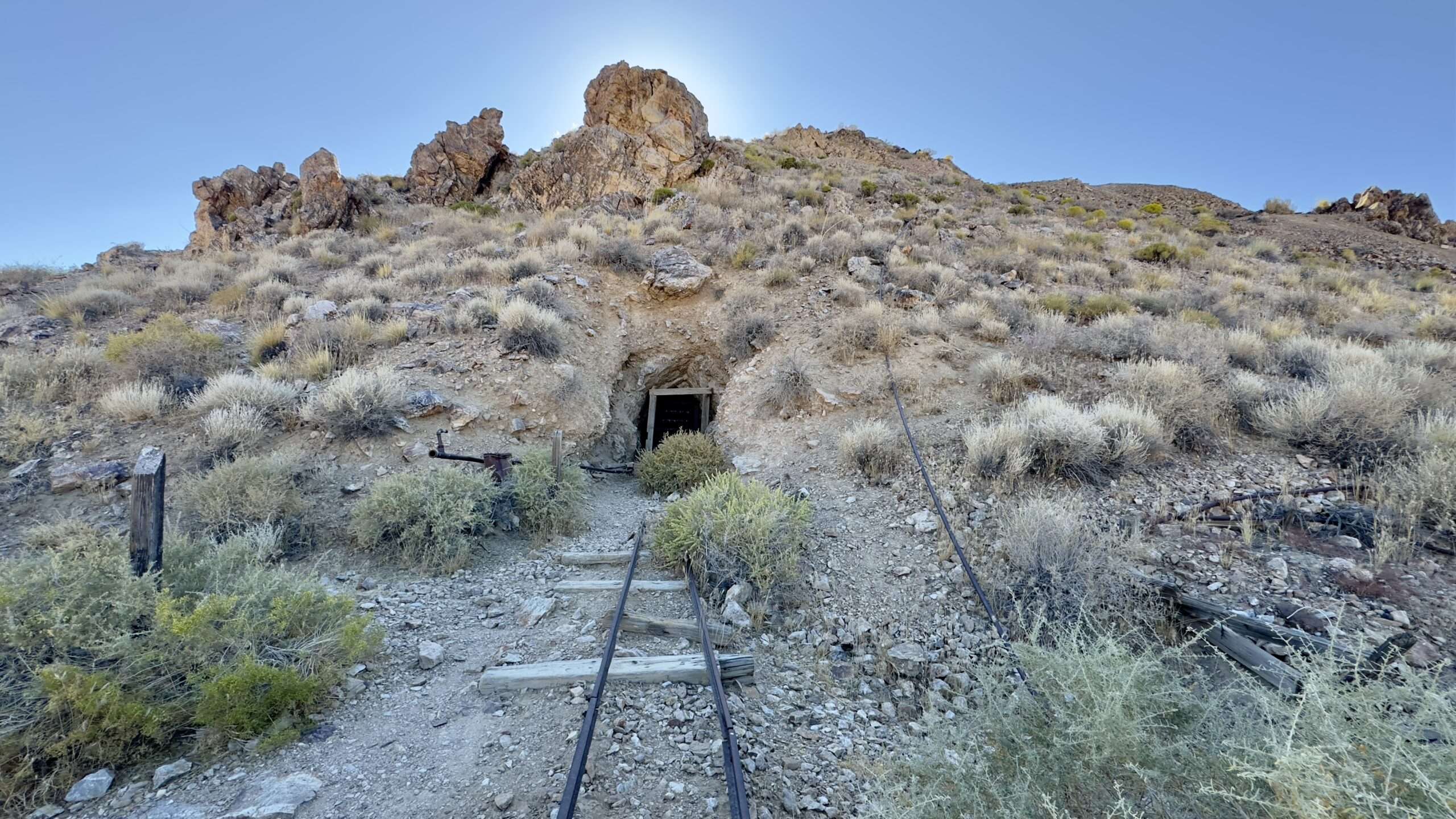
As Aguereberry remained behind at their Eureka Mine at “Harrisberry,” Shorty and his mule traveled to record their claim. Thanks to Shorty’s beloved saloons, word spread rapidly, and soon, 300 called the new settlement home. As reports spread, the town became known as Harrisburg. It never grew beyond a tent city. Discoveries at nearby Skidoo drew miners away.
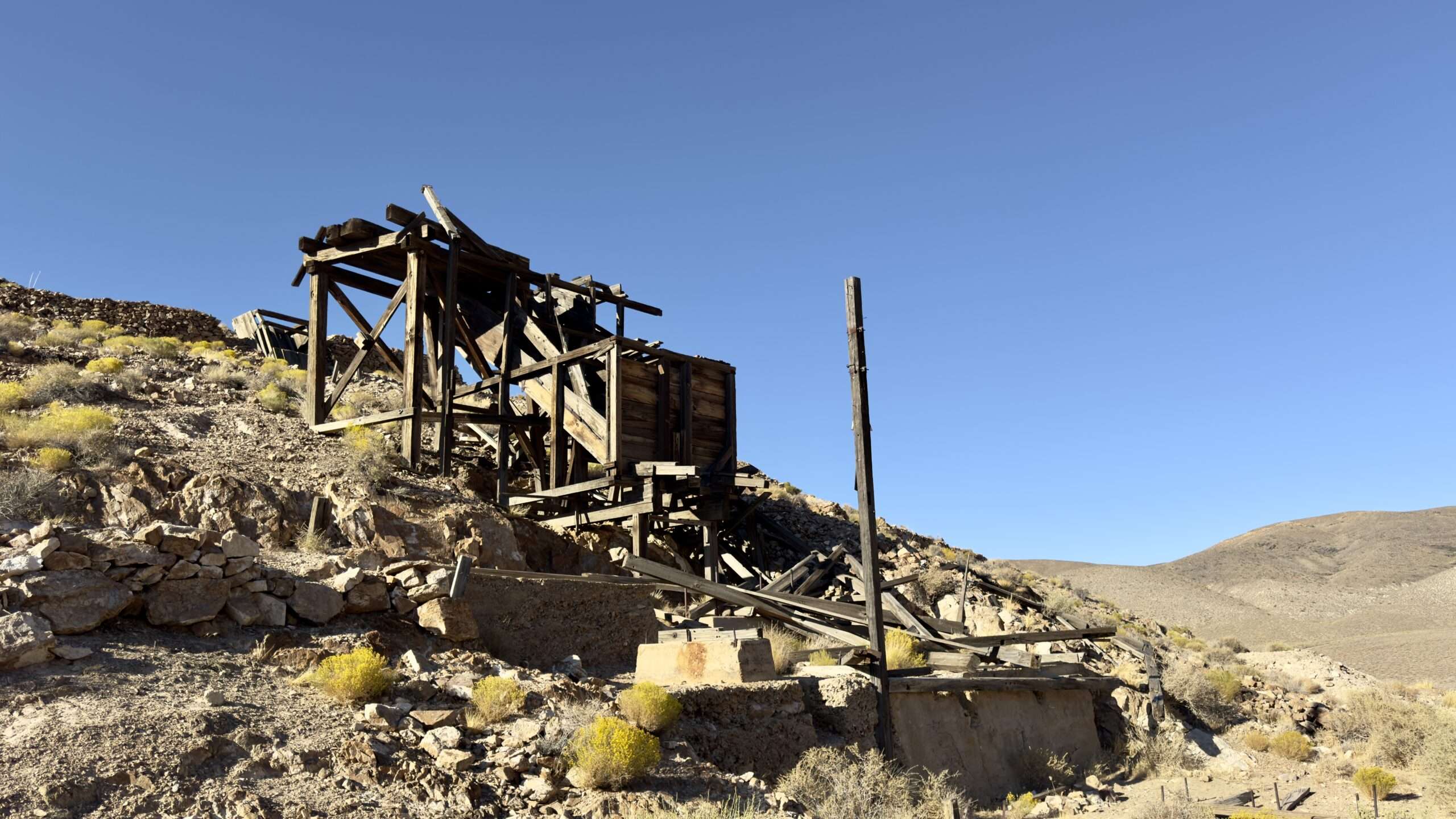
Aguereberry continued to work the Eureka. In 1907, he built a trio of cabins, taking the cabin on the right for himself. He continued to work his mining claims alone until he died in 1945.
Skidoo
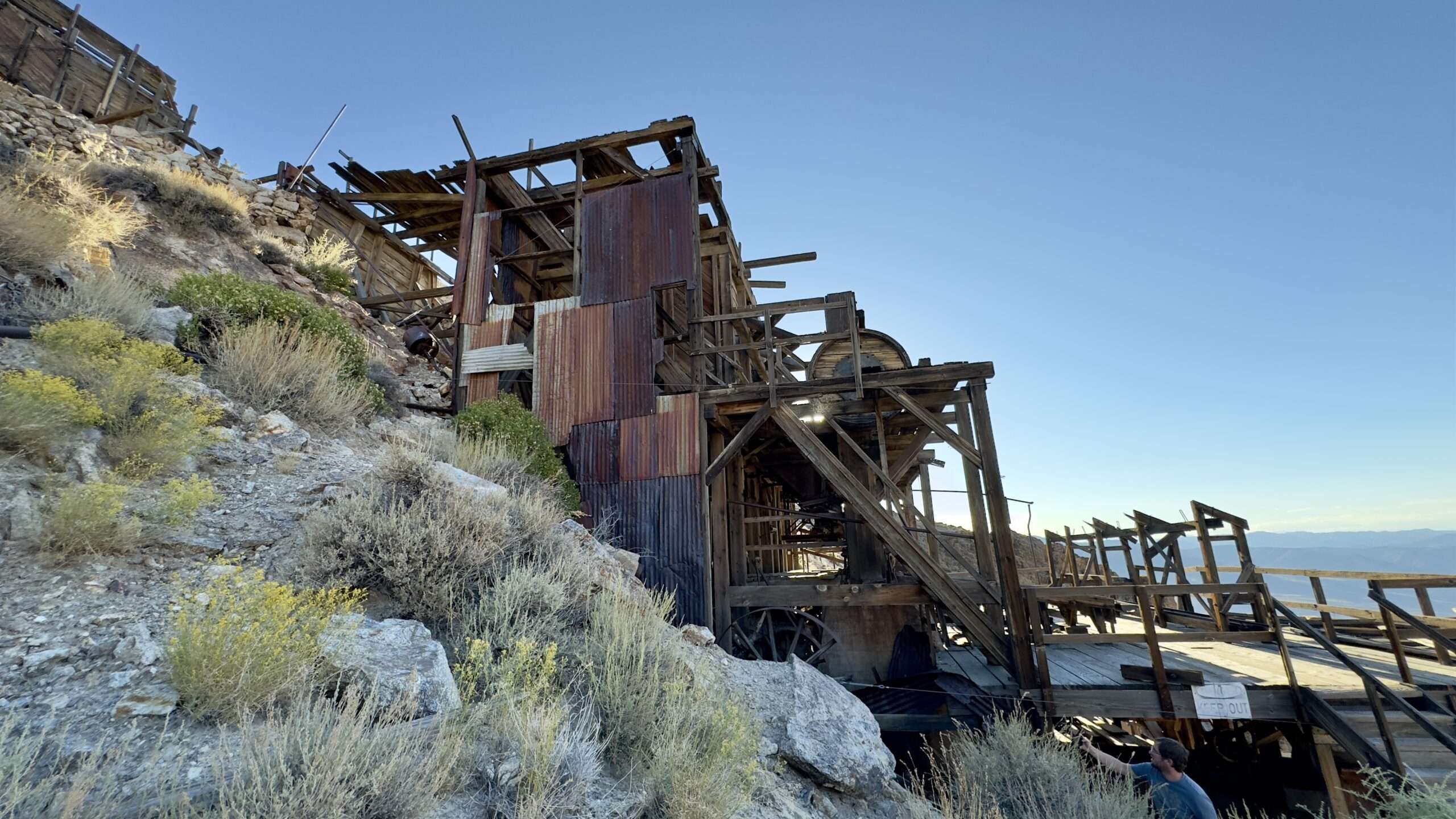
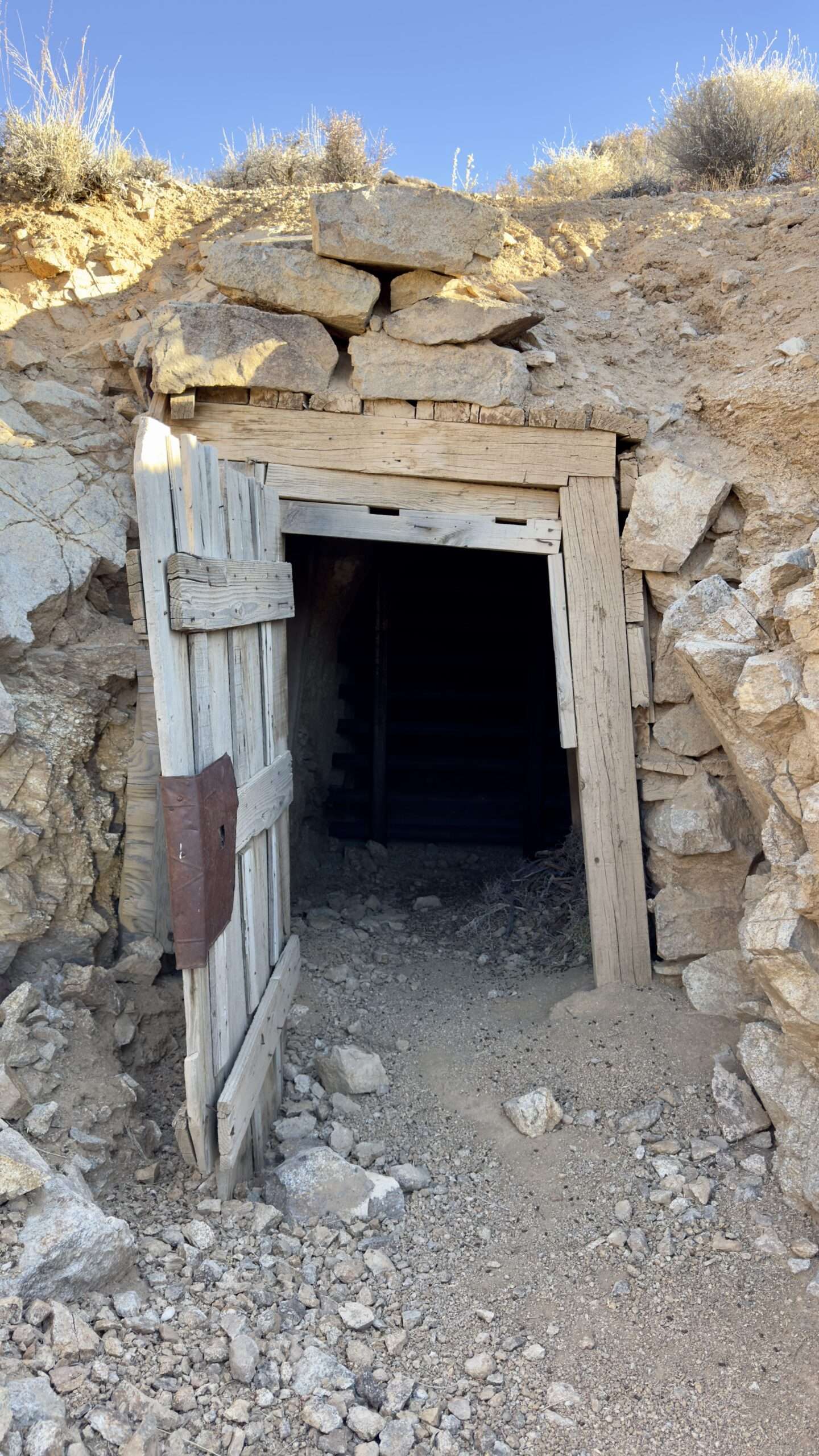
Journigan’s Mill
The Journigan MIll was a cyanide plant between 1930s-1950s. The site had previously been used for mills.
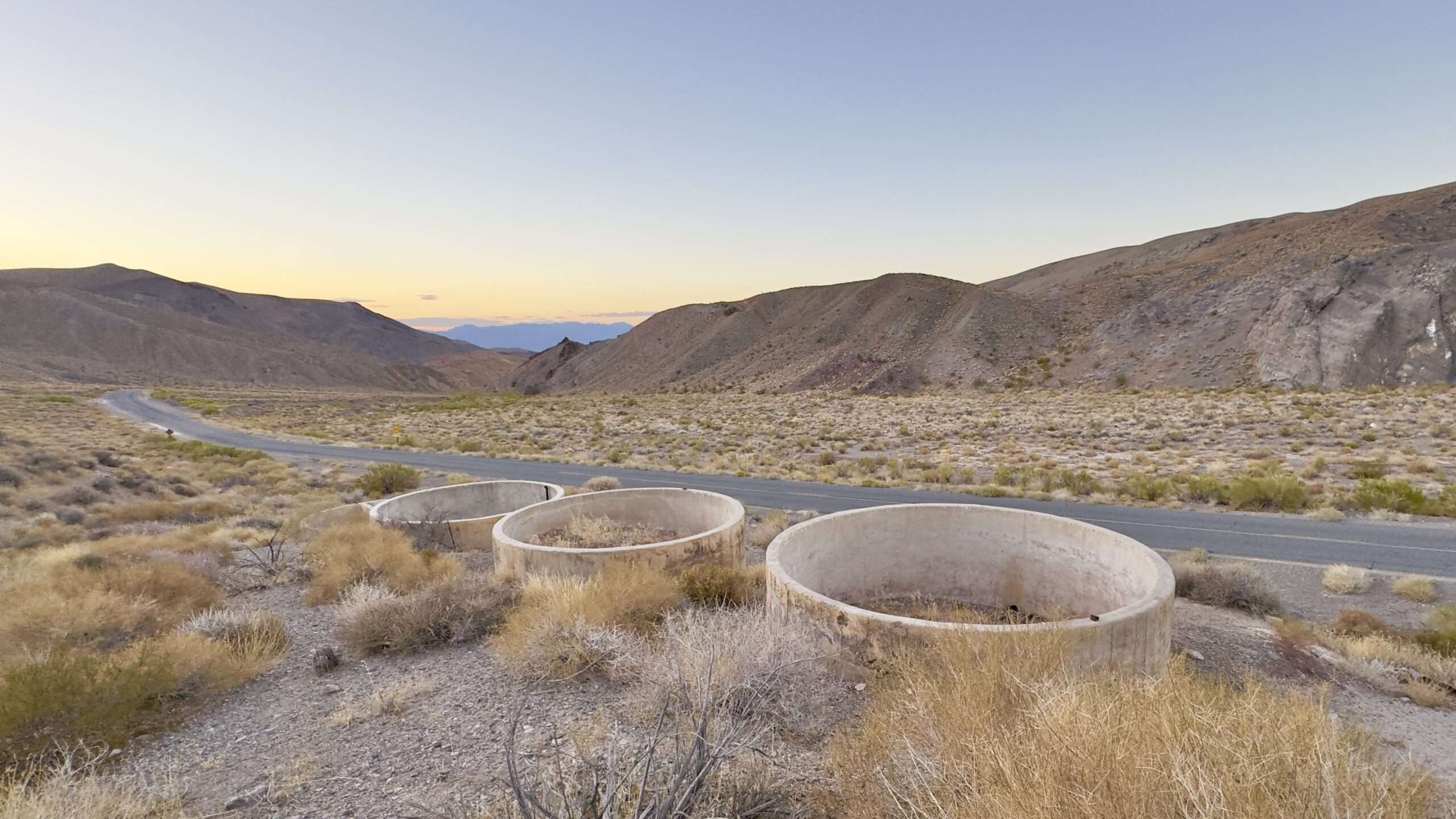
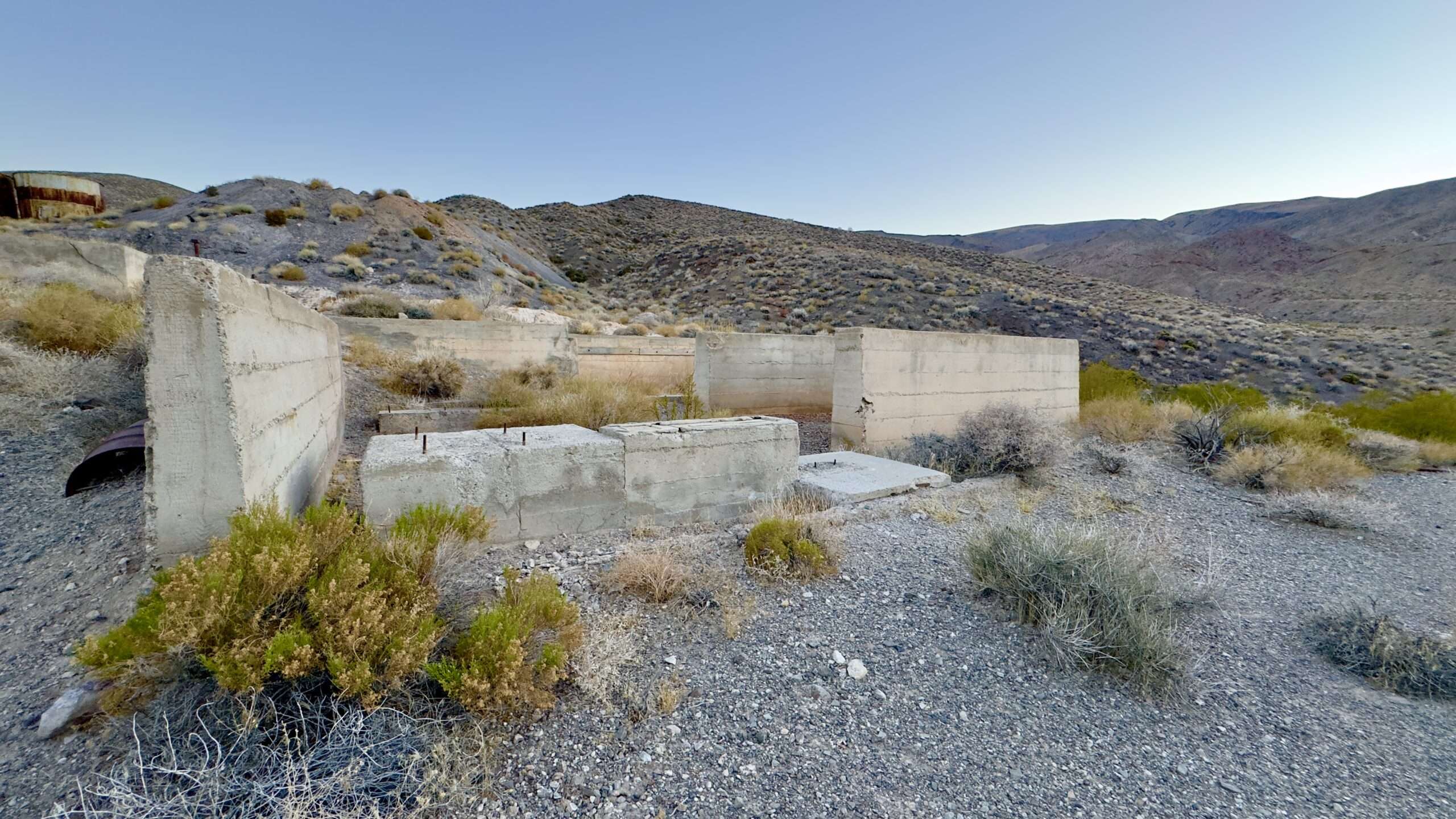
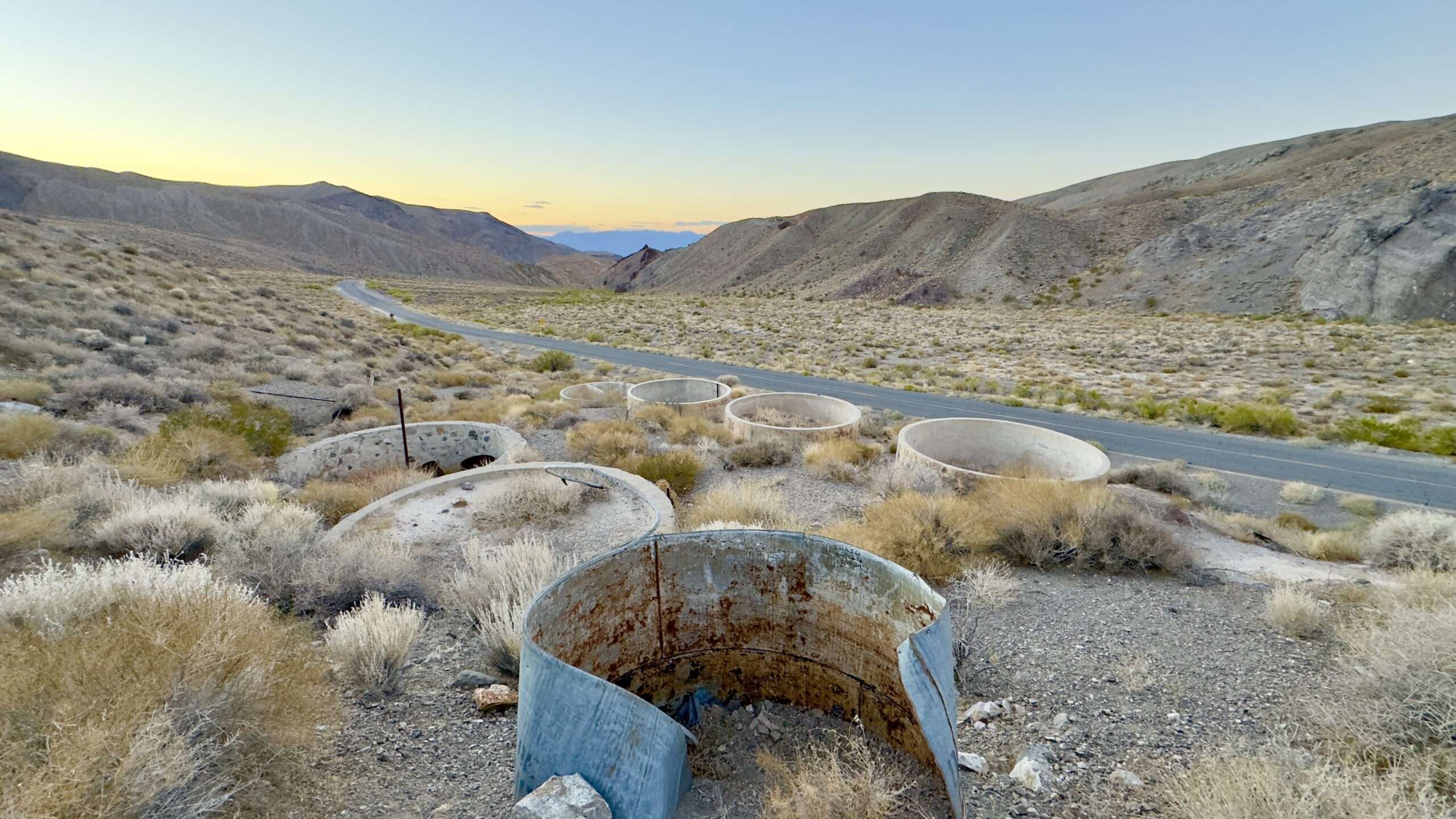
Tuttle Creek Ashram
I will have a full article about the ashram to share this week. Alltrails rates the hike as a “challenging route.” The ashram is at 7,600 feet, meaning the trail steadily climbs with no relief. The hike from the trailhead would have been one thing, but the trailhead was blocked, more than doubling our journey.
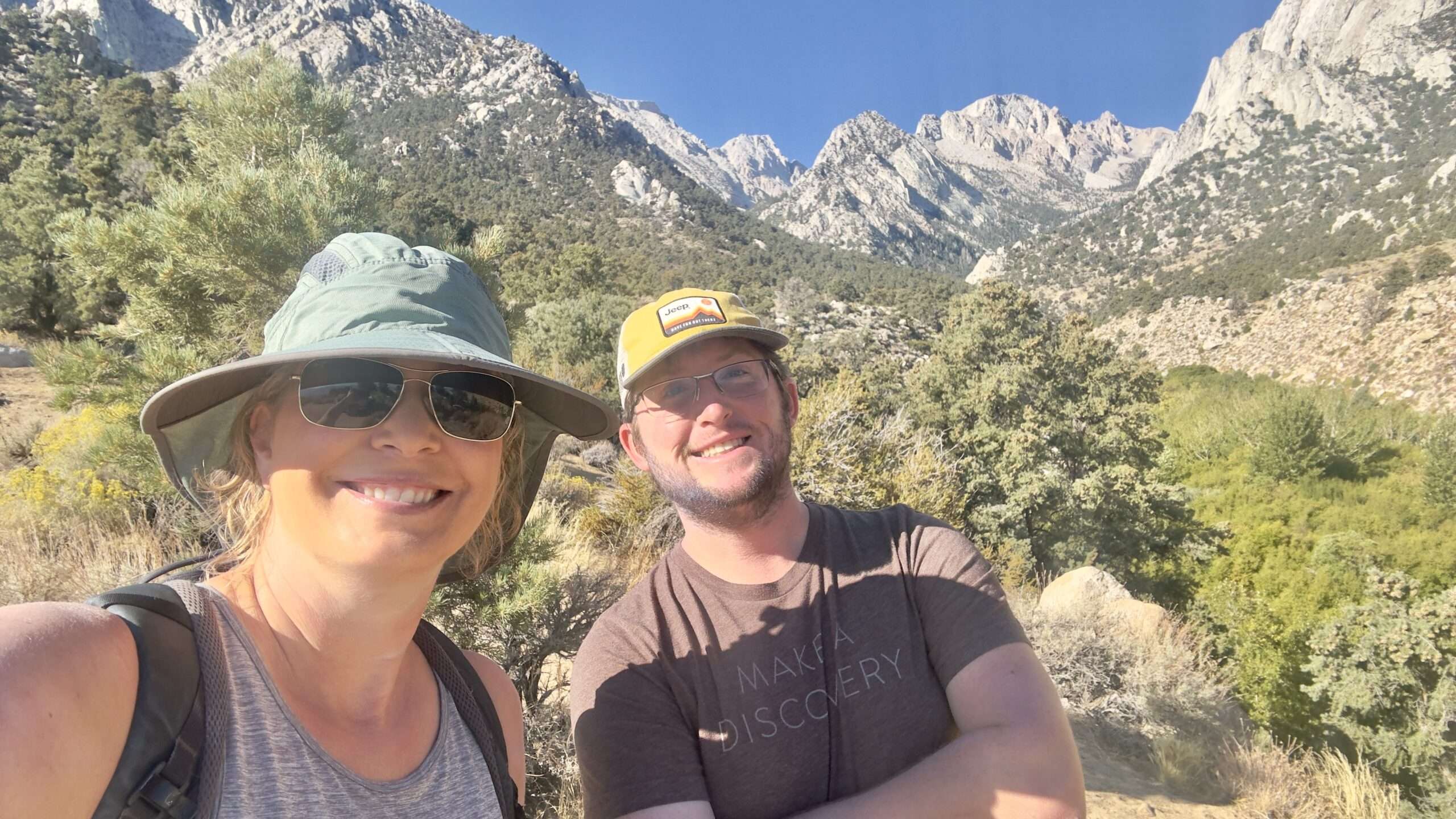
We looked so happy and clueless before the hike! The ashram is on the back peak in the tree line.
Owenyo
Quaker colonists settled the sit in the early 1900s. They sold in 1905 when the Carson and Colorado Railroad arrived. Owenyo was a portmanteau, or blend of the words Owens and Inyo. It has a post office 1902-05 and 1916-41.

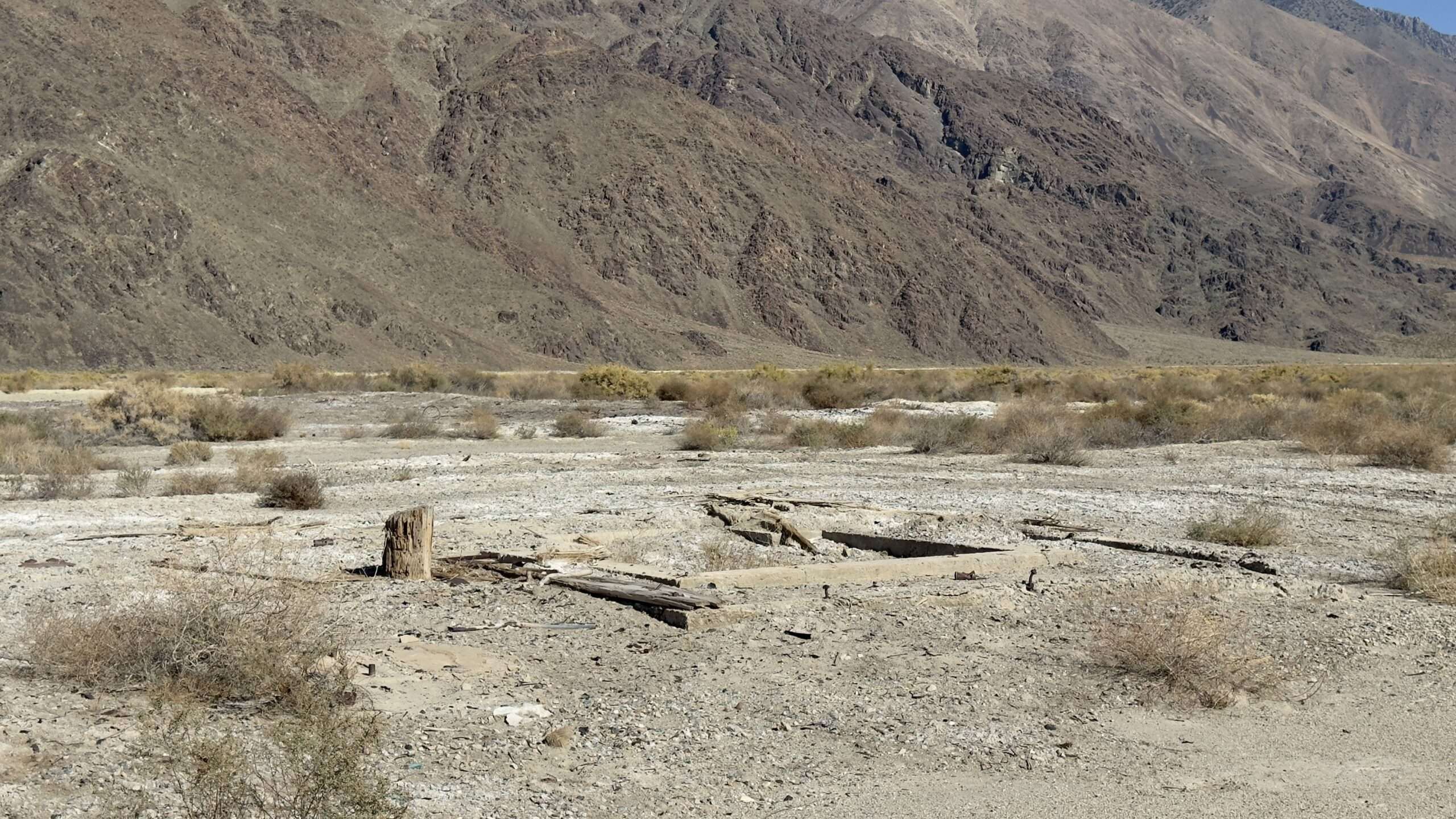
Reward Mine
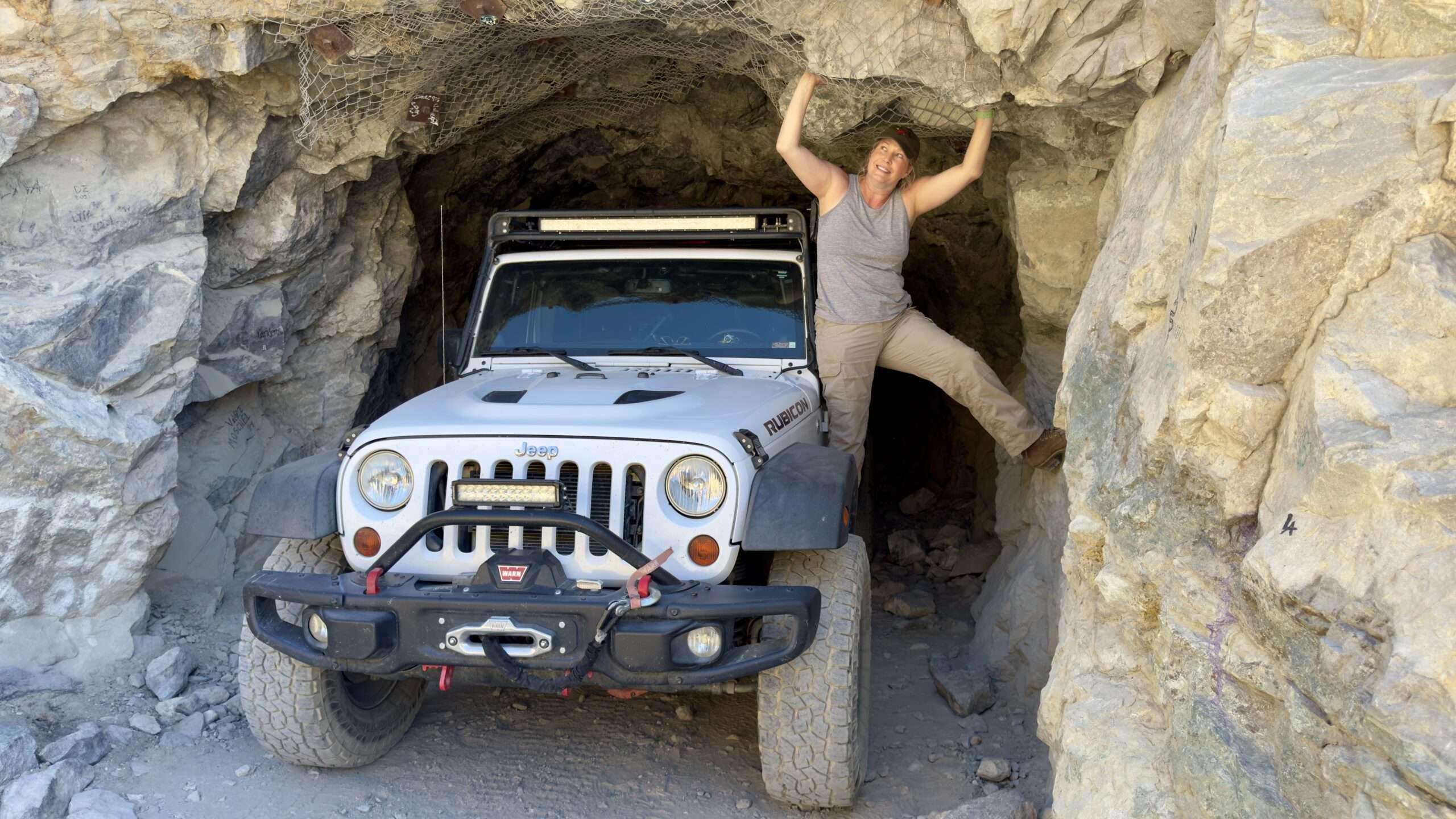
Hmmm, not sure if Honey Badger will fit in the Reward Mine.
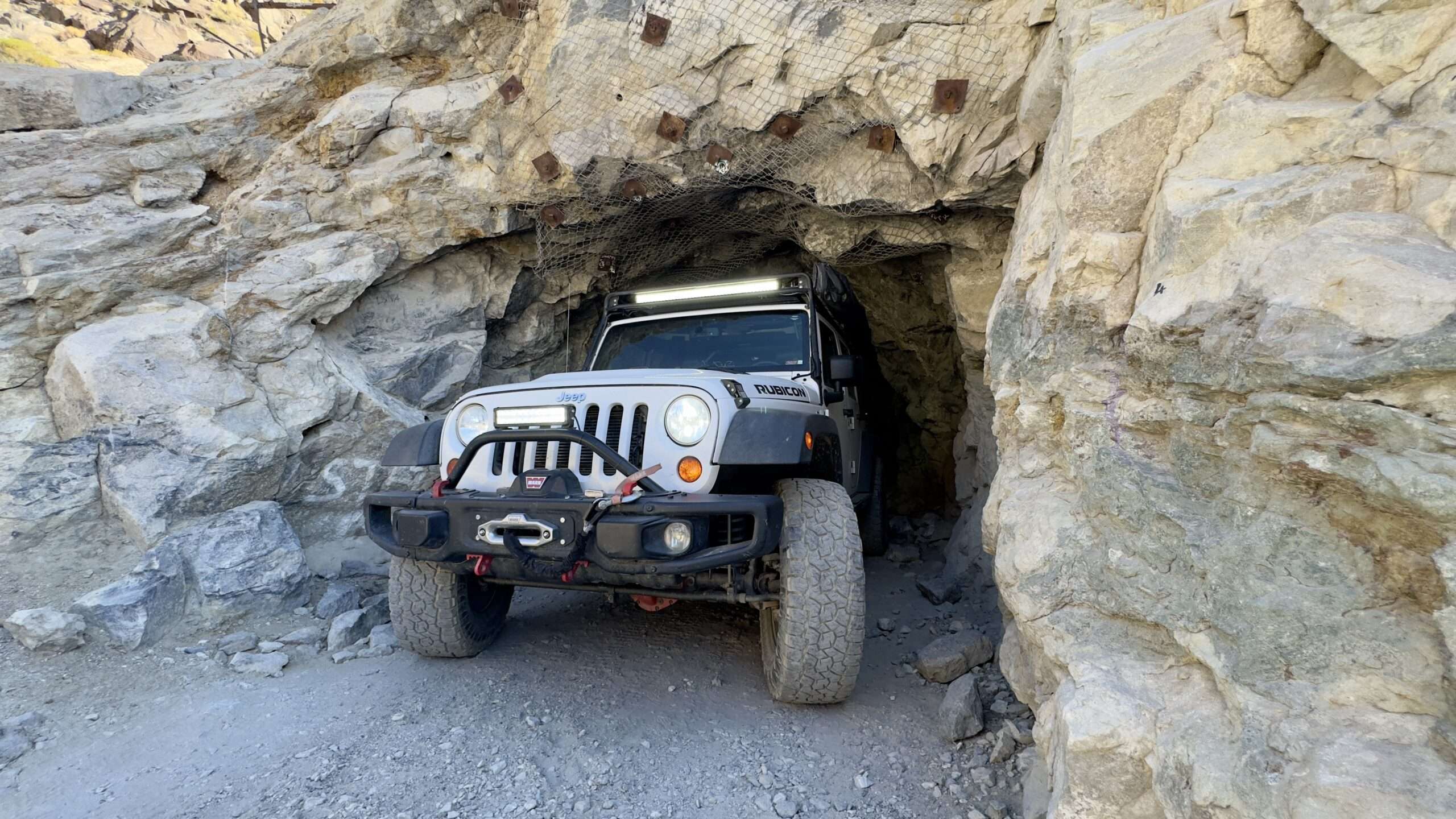
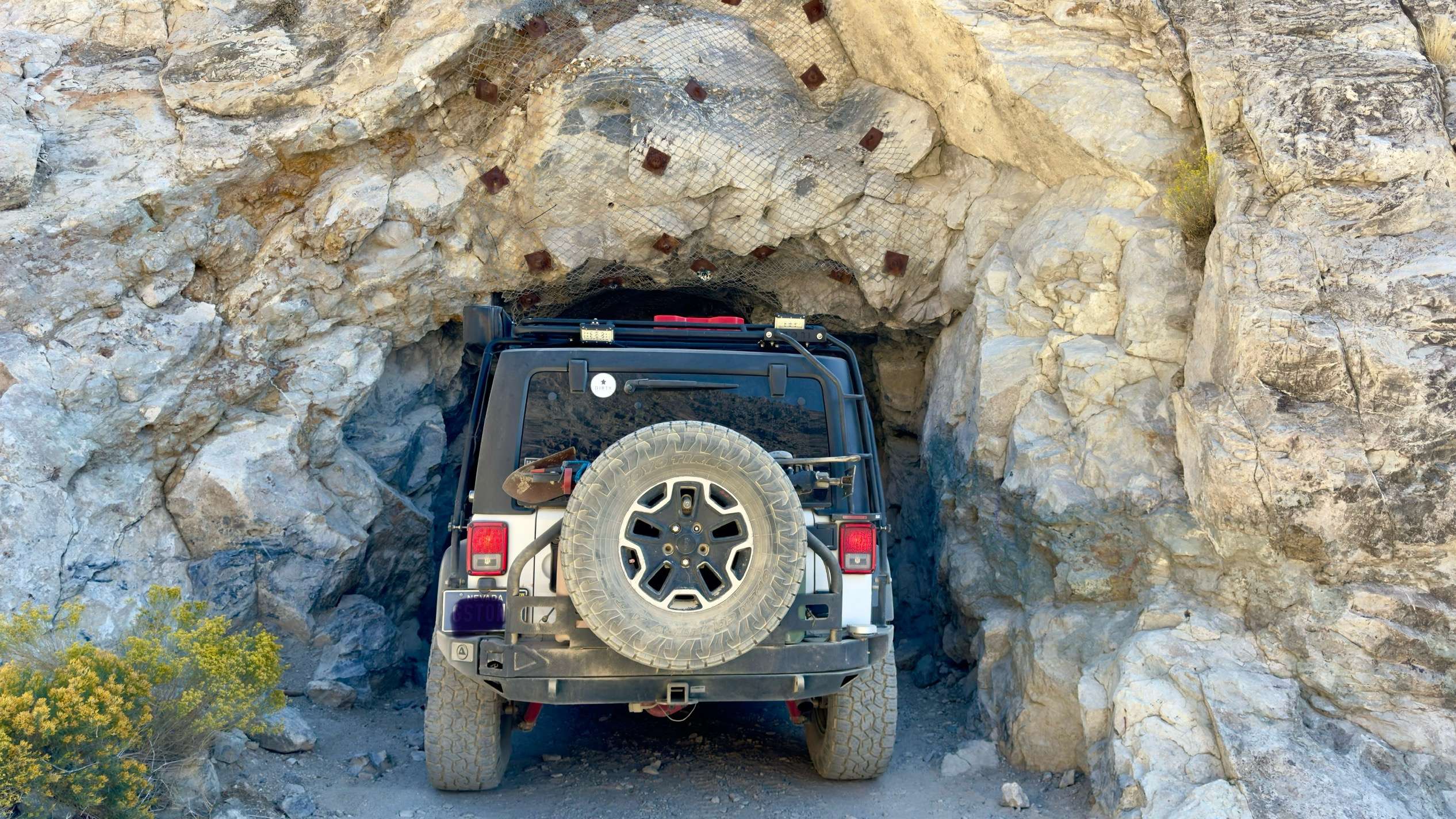
Ants in my pants
Is it really a ghost towning trip without a little bit of drama?
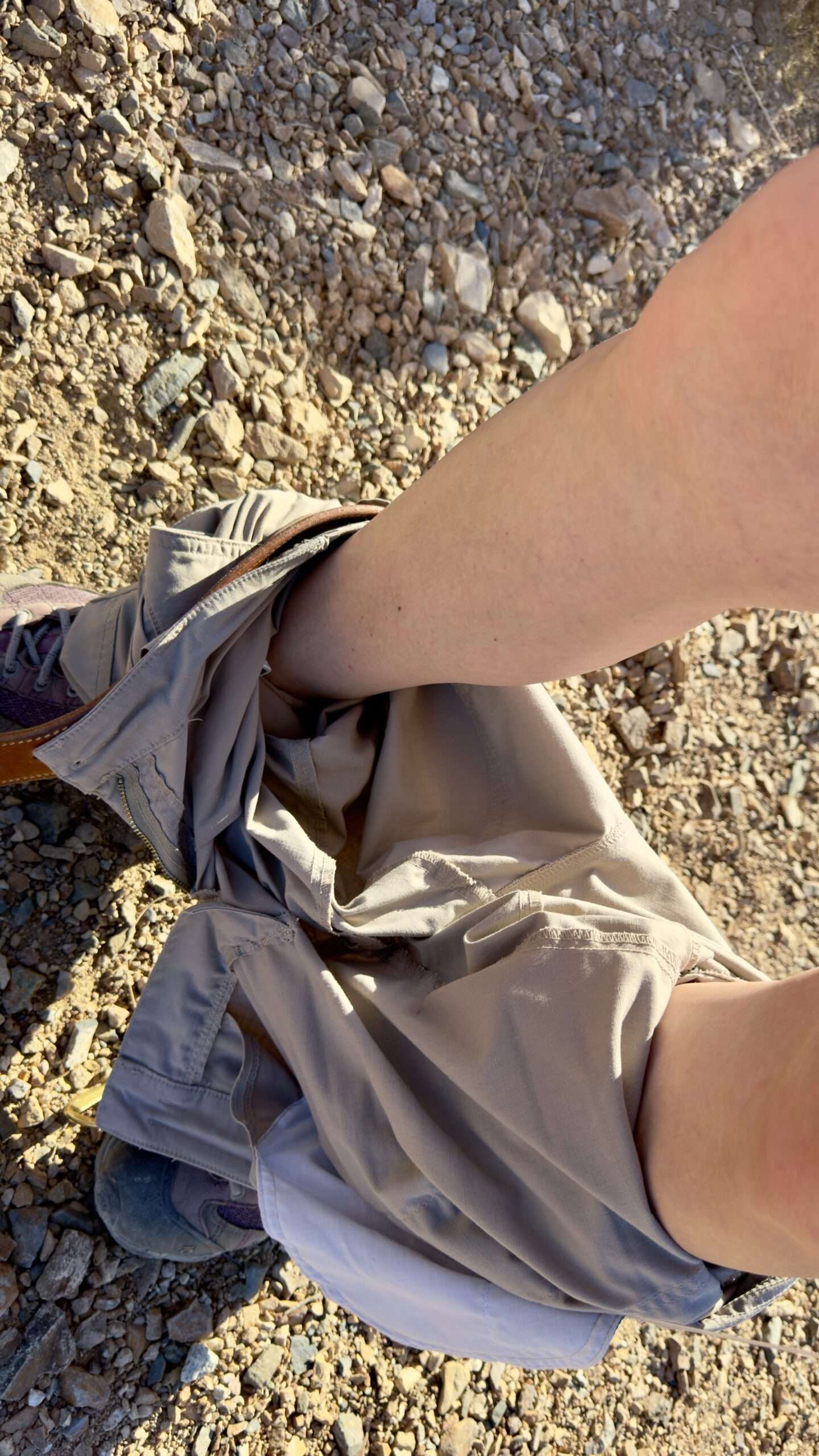
Toward the end of day 2, we were exploring Harrisburg in Death Valley. Austin hiked over the hill from the Eureka Mine, so I moved the Jeep to Aguereberry Camp. Walking to the buildings, I felt a sharp pain in my calf. It was getting late and I thought it was time for the danger noodles to appear. Remembering a story where a hiker didn’t know a rattlesnake bit her, I pulled up my pant leg, half expecting to see double fang marks. Thankfully, I was good.
Soon, another pain hit, and it was a little higher. I assumed I had a sticker in my pants. Then, a few more pains moved higher on the back of my leg. I felt something move, heading north up the back of my thigh. As this is the year of the scorpion, my first thought was one had crawled up my pants.
Standing on the trail, I ripped off my belt, popped the button, and dropped my drawers. There I stood, with only my cell phone in one hand and my camera on the opposite shoulder, pants down around my ankles. With nowhere to sit or place my phone and camera, I danced around the dirt, trying not to add insult to injury by falling on my face. Hopping over to the nearest rock and checking for any creepy crawlies or slithering serpents, I sat down and found a red ant in my pants. The little pissed-off, nasty-tempered red ant had bitten me from my low calf up the back of my leg.
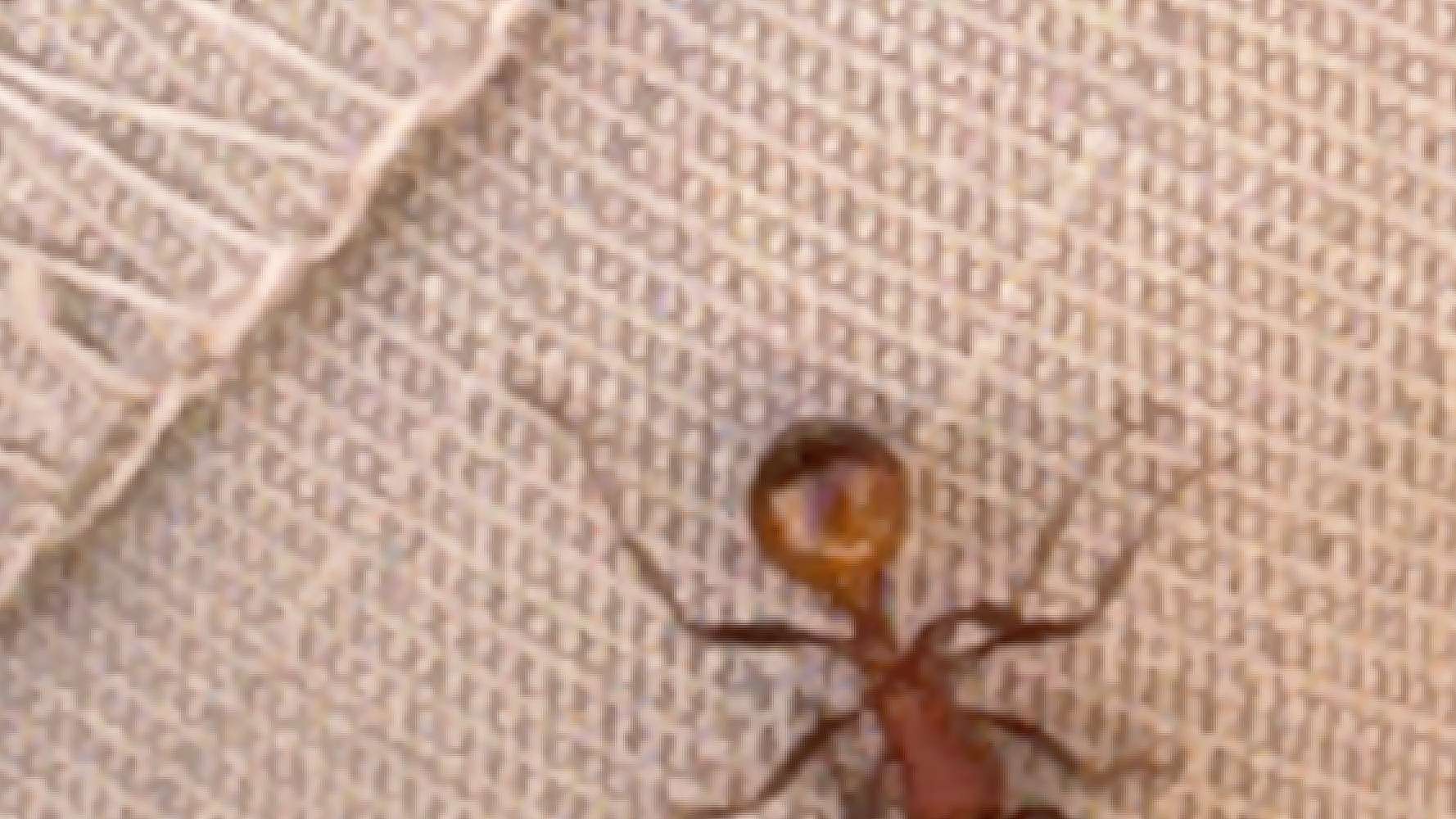
Paul Stoermer says
Love following your travels. Death Valley is one of my favorite parks. Also enjoyed Bodie years ago.
Tami says
Thanks for following!
Death Valley has so much to explore, more than most people know. Same with Bodie, there is so much beyond the park boundary.
ROGER PETERSON says
It is such a treat to read about your adventures! I have been to Bodie 10 years ago and love the place. Back in the seventies I rode with some friends to visit a large stamp mill and a ball mill in the California desert some where….too long ago to remember. But I do remember meeting Jackass Andy in one of the canyons, living off a small claim. Miss my adventures with my friends. I guess we will follow you instead. Keep up the good work (fun)!
Tami says
Thank you, I am glad you have enjoyed my travels.
I wonder if that mill is still there, I’m not remembering one in the California desert.
Jackass Andy sounds like a kick!
Richard McGrew says
Boy, you crammed a lot into this trip. You get a round. Sorry you missed Brent. I’d like to meet him also. I follow both of his channels. His book is a good one.
Tami says
We do keep running when we are out, usually not even stopping for lunch. This trip didn’t have a lot of sites, but covered a lot of miles.
A friend wants to take me back to Cerro Gordo, so maybe I’ll meet Brent then.
Marcella Campbell says
Than you for sharing your amazing adventures of old Ghost towns and mining villages. I am a lover of history, mostly know a lot of Idaho History and Montana. I lived in old railroad spot out side of Wells, NV. I think it was North and East when I was in the 3rd grade. The name of the railroad area was called “Summer Camp, Nevada” If you ever study any of these places I would love for you to share your information. Your excursions are so informative and your pictures are wonderful. Thank you so very much. Have a blessed and healthy Winter Season.
Tami says
Thank you and I’m so glad you enjoy the articles. I grew up in Idaho so explored a number of ghost towns, also into eastern Oregon. I haven’t heard of Sumer Camp, but messaged Nevada Expeditions. I haven’t explored much of Wells, but want to do more in that area. My son is looking at moving to Elko, so I’m thinking of all the places we can visit!
Dellilah says
as always, enjoy so much your write ups!! And often get inspired to go find some of these places. In this post I’ve been to just about every location in the last 5 years or so and long to go back soon. I assume you mean Brent Underwood. Yes, I’d like to meet him too. We missed each other in 2020 when covid just broke out, I was in Cerro Gordo the last week of February and i think he came from Texas the first week of March.
I’m going to head out to Bridport for just a couple days of rest and fun. I may revisit Chemung or look for locations I’ve not been to yet.
thank you, Tami! I hope to one day meet up with you.
Tami says
Thank you, it means a lot of me that people enjoy my travels and writing.
It sounds like you have been busy! I’m glad I inspire you to get out and explore our amazing history.
Yes, I meant Brent Underwood. Maybe the next visit I will meet him.
Enjoy Bridgeport, maybe I’ll run into you at Chemung sometime!
John Harmon says
Great story ! Great pics ! Really nice legs ! Red ants are nasty little creatures ! I know first hand ! Looks like a fun hike though !
Tami says
It was a fun trip as always. It was worth it seeing the ashram, but I doubt I’d do it again.
For such little suckers, red ants hurt! A week later and I still have a few welts.
Maybe sometime I’ll have a decent pic of my legs and not in the middle of some crazy story 😉